Tags :: Comedy

Paddington in Peru is pleasant, underachieving nonsense
The decency and goofy sweetness of the King films continue in Paddington in Peru, though the broader moral and social themes are lost in the quest adventure plot.
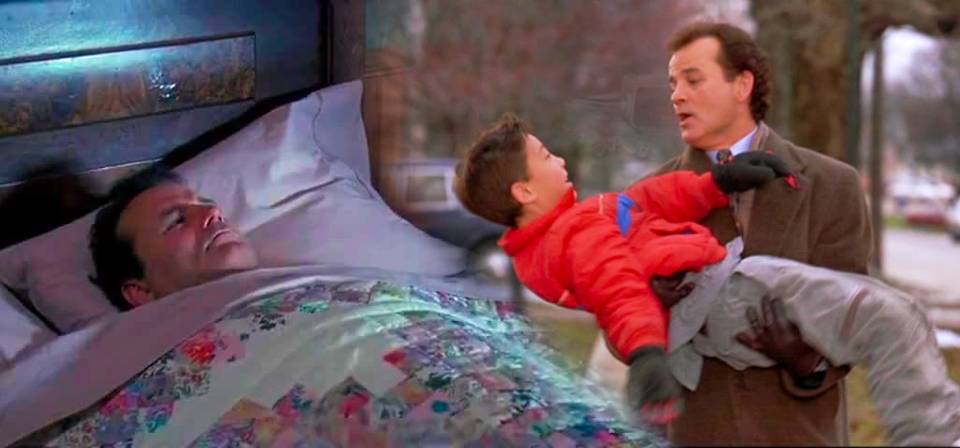
Groundhog Day at 30 and the riddle of Bill Murray
Thirty years on, the spiritually evocative, time-bending comedy is as beloved as ever, but its legendary star has been subjected to new scrutiny over reports of inappropriate behavior.
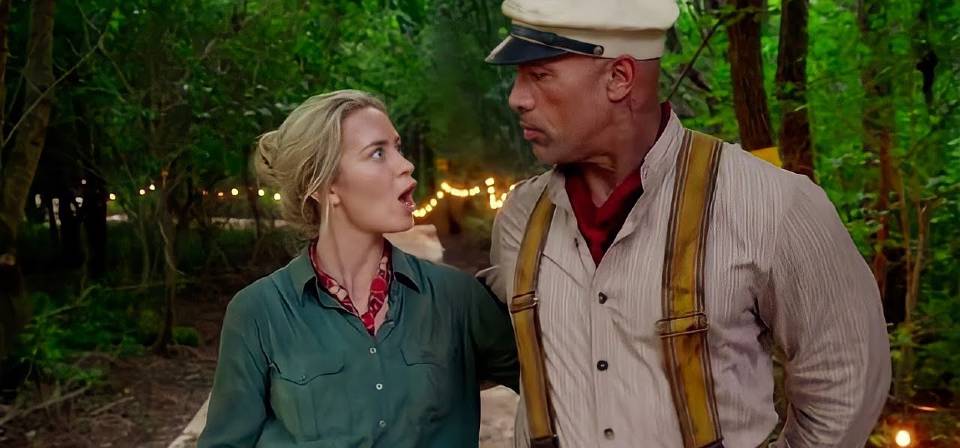
Jungle Cruise (2021)
Dwayne Johnson and Emily Blunt are highly watchable, but Disney’s latest theme-park movie trails haplessly in the wake of Pirates of the Caribbean without a ghost of its inspiration.
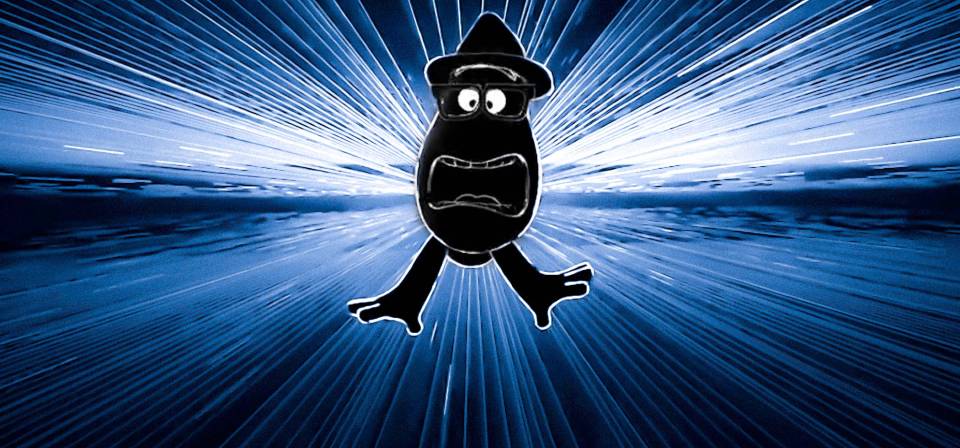
Soul (2020)
Pete Docter’s Soul is Pixar’s third straight original feature, following Coco and Onward, that is explicitly about death, finality, and, in some way, what lies beyond.

Onward (2020)
Pixar’s movies tend to play as metaphors for the creative rise and fall of Pixar itself. When someone says “Maybe this place isn’t as adventurous as it used to be,” it’s hard not to hear an echo of the filmmakers’ voices.
![Jojo Rabbit [video]](/uploads/articles/jojorabbit.jpeg)
Jojo Rabbit [video] (2019)
Taika Waititi has directed some cracking comedies, but can even he make Hitler funny?
![The Farewell [video]](/uploads/articles/farewell.jpeg)
The Farewell [video] (2019)
Fans of NPR’s This American Life already knew that Lulu Wang had an extraordinary story. What we now know is that she is also an extraordinary filmmaker.
![The Dead Don’t Die [video]](/uploads/articles/deaddontdie.jpg)
The Dead Don’t Die [video] (2019)
I mean, you can kill them, but that’s not the point. The question is, were they ever alive in the first place?

The Grinch (2018)
Replacing Karloff-ian malice and spite / Cumberbatch-ian grousing makes this one Grinch-lite. / It’s a kinder and gentler tale than we’ve seen / Of course he’s not nice, but this Grinch is less mean.
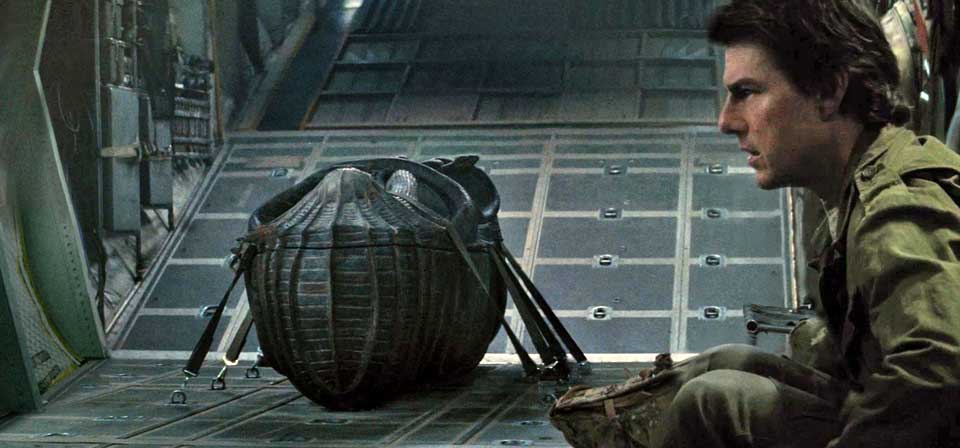
The Mummy (2017)
I have never seen a movie work harder or more hopelessly than Universal’s new The Mummy, not merely to launch a new franchise, but to jump from a standing start into a full-blown Marvel-style shared cinematic universe in one go.
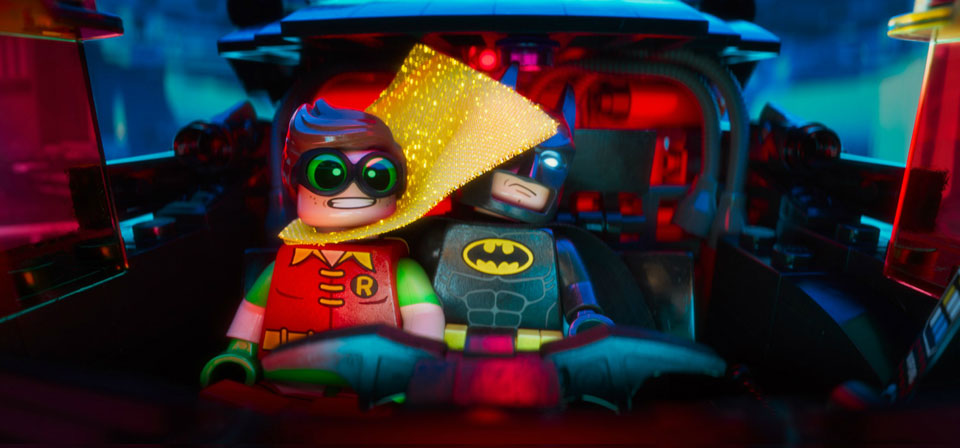
The Lego Batman Movie (2017)
Despite the villainous full-court press, Batman’s victory is so assured that no one is even worried about it. Clearly, something subversive has to happen to kick things out of superhero-movie business as usual and challenge Batman to his core. Would you believe … a giant swirling energy portal in the sky?
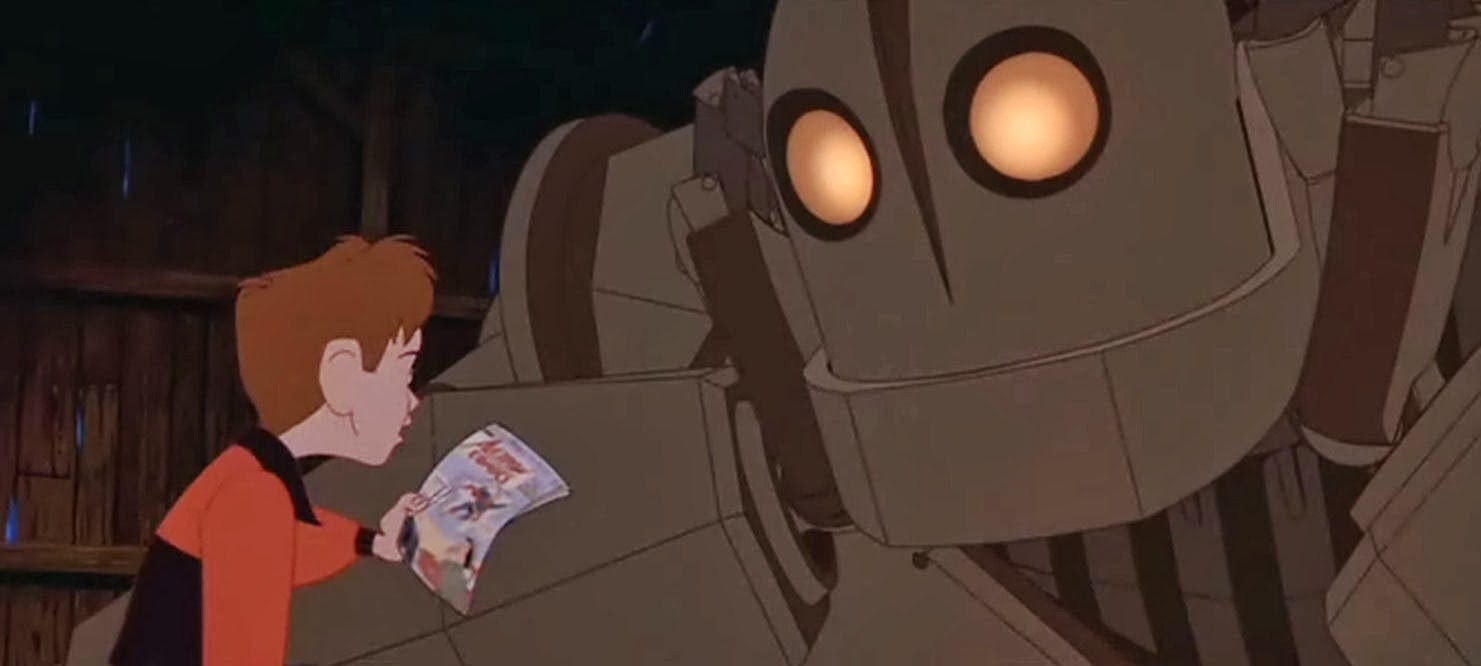
The Iron Giant (1999)
There is a purity to Brad Bird’s directorial debut The Iron Giant, based on the British poet Ted Hughes’ children’s novel The Iron Man, that is inconceivable in the family film landscape of today.
![Ghostbusters [video]](/uploads/articles/ghostbusters2016.jpg)
Ghostbusters [video]
The new Ghostbusters is perhaps more important than good, which isn’t a great place to be.
![Central Intelligence [video]](/uploads/articles/centralintelligence.jpg)
Central Intelligence [video]
I can’t imagine anyone but Dwayne Johnson making this movie work.
![Love & Friendship [video]](/uploads/articles/loveandfriendship.jpg)
Love & Friendship [video]
Whit Stillman and Jane Austen! I couldn’t limit myself to 60 seconds on this one.
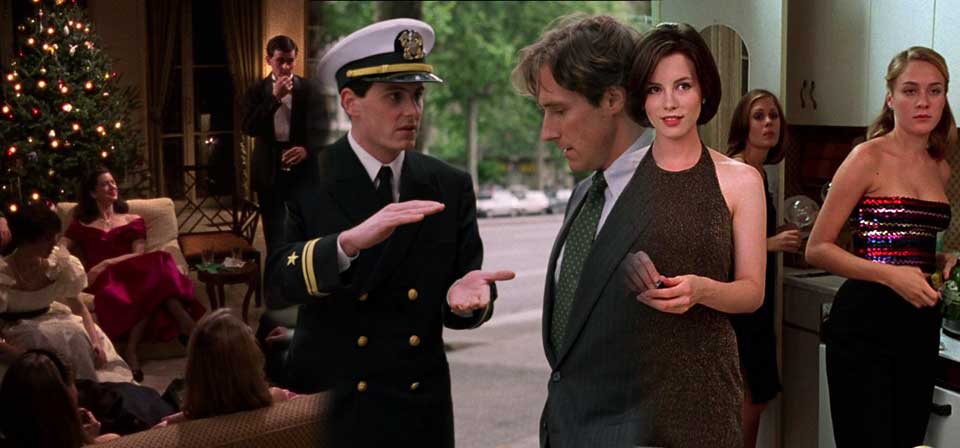
Whit Stillman and the discreet charm of the Urban Haute Bourgeoisie
He’s been called “the WASP Woody Allen,” but I prefer my friend Ron Reed’s moniker for Whit Stillman: “the Jane Austen of indie film.”
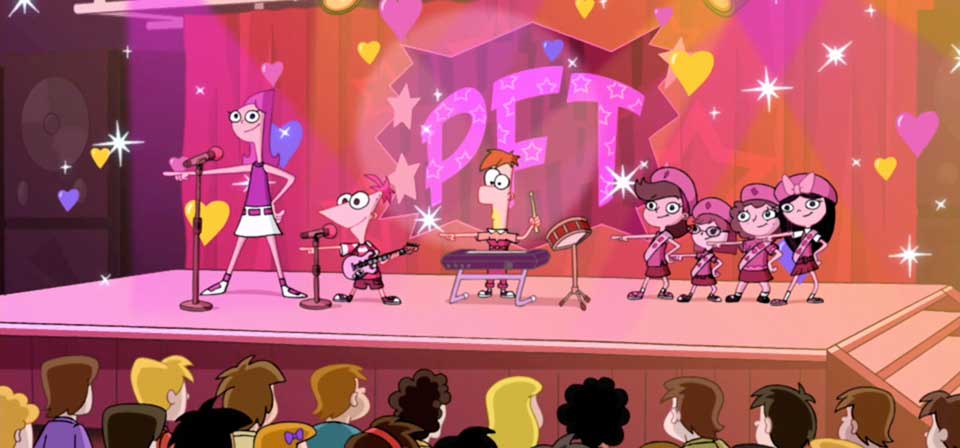
The subversive non-subversiveness of “Phineas and Ferb”
There are at least a half dozen reasons “Phineas and Ferb” never should have existed, and how fortunate for viewers of all ages that it does.
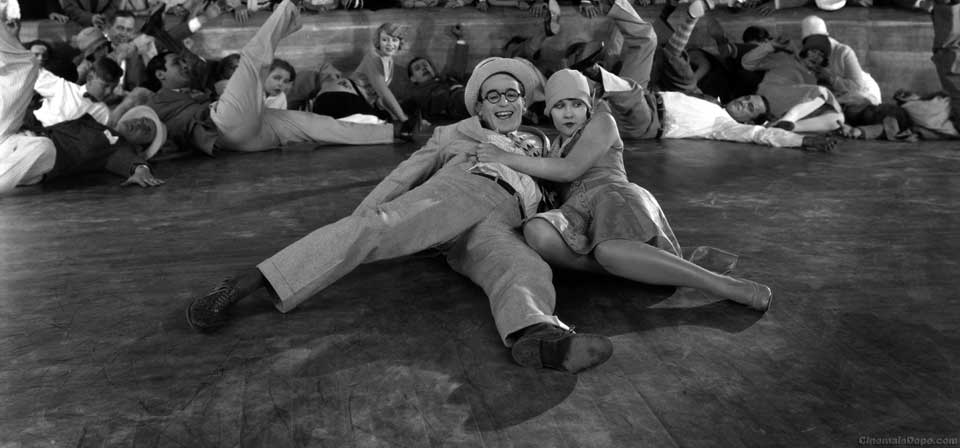
The down-to-earth comic genius of Harold Lloyd
Due to the vagaries of history, Lloyd is less well-known today than Chaplin or Keaton, but his legacy lives on. If you’ve seen Back to the Future (1985), Bringing Up Baby (1938), any of Jackie Chan’s movies, or any incarnation of Superman or Harry Potter, or you’ve experienced Lloyd’s influence.
Pixels (2015)
The idea of saving the world from alien invaders with classic video-game skills is not without a certain dumb appeal.

Sullivan’s Travels (1941)
The comic genius Preston Sturges believed that laughter is the best medicine, and that what people in hard times want is to forget their troubles and escape for 90 minutes or so into a world of lighthearted comedy, snappy repartee and slapstick silliness.
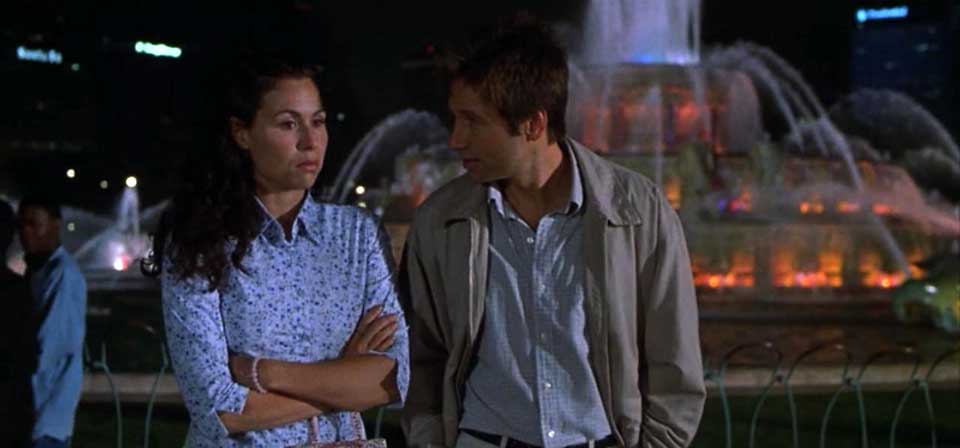
The easygoing Catholicism of Return to Me
Return to Me has an easygoing Catholic vibe akin, but not identical, to Golden Age Hollywood piety; in fact, the movie blends nostalgia and irreverence for the Catholic Hollywood of Bing Crosby’s era.
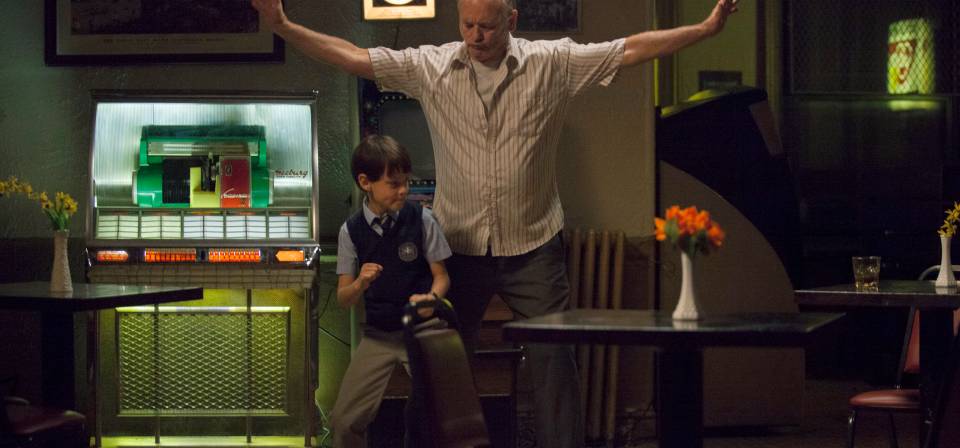
St. Vincent (2014)
When a Hollywood comedy pairs a dissolute, misanthropic curmudgeon with a cute young kid, you expect a story of redemption — particularly when the movie is called St. Vincent, and the curmudgeon’s name is Vincent. When the curmudgeon played by Bill Murray, it’s a done deal.
Two Very Different Responses to Parenthood: Chef and Obvious Child
Among this summer’s successful indies were a pair of R-rated comedies — each from a filmmaker serving as writer, director and star — depicting two very different responses to the formidable responsibilities of parenthood.
The Hundred-Foot Journey [video] (2014)
While I didn’t care for this movie as much as I hoped I would, I will say I went right from the theater to an Indian restaurant, where I got something I enjoyed more.
Cloudy with a Chance of Meatballs 2 [video]
Part of me kind of wishes they had kept the original title Cloudy 2: Revenge of the Leftovers. Cloudy With a Chance of Meatballs 2: my 60-second “Reel Faith” review.
Much Ado About Nothing [video] (2012)
Shakespeare knows how to throw a party … and so does Joss Whedon.

Finding Nemo (2003)
(New review for 3-D rerelease) Andrew Stanton’s Finding Nemo is the best father-son story in all of Hollywood animation, and maybe animation generally. It’s also a stunningly gorgeous film that exploits the potential of computer animation like no film before it and few films after it.
Ice Age: Continental Drift (2012)
Ice Age: Continental Drift is more like a Happy Meal than a movie. It’s another serving of exactly the same product that millions of families have been served before and will come back to again and again. Its brand-name familiarity and reassuring sameness are its stock in trade. Nothing is different except for the toys; last time it was dinosaurs, this time it’s pirates. It’s more resolutely like the three previous Ice Age movies than they are like themselves.
Madagascar 3: Europe’s Most Wanted (2012)
I blame the penguins for Madagascar 3: Europe’s Most Wanted.
Men in Black 3 (2012)
It’s all acceptably diverting, and not actively unpleasant like the 2002 sequel. There are no grand twists or revelations comparable to the truth about the “galaxy” in the original. What the film could most use, I think, is a wide-eyed uninitiate like Linda Fiorentino in the original or Rosario Dawson in the sequel — but one from 1969, which would offer a fresh twist on the outsider’s experience of the MIB’s nutty world.
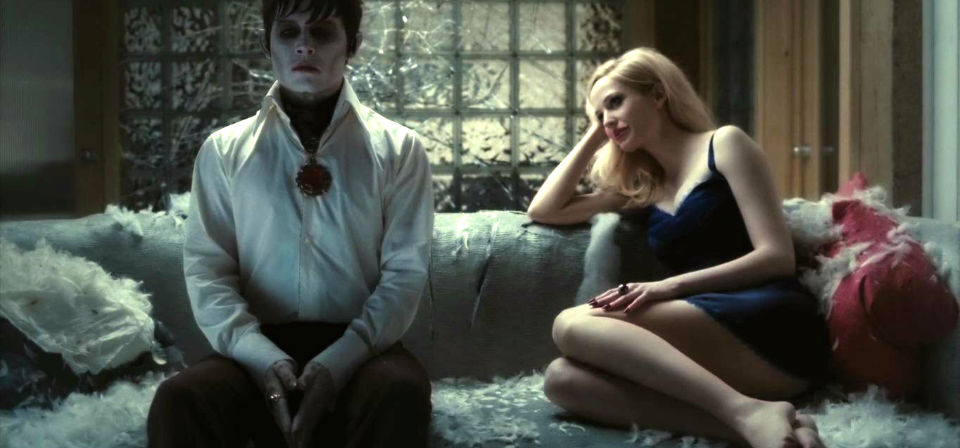
Dark Shadows (2012)
If you are in love with the 1970s and Johnny Depp, perhaps you will enjoy this. Andrew O’Hehir says he knew he would love the film when he spotted a banana-seat Schwinn bicycle leaning against the front porch of Collinwood in an early scene. All right. But then comes a “happening” featuring Alice Cooper as himself (!), with a disco ball and cage dancers. At Collinwood. Is this really anyone’s idea of a good time?
We Have a Pope [Habemus Papam] (2012)
In a way it’s like the antithesis of a Dan Brown novel. Brown’s stories peer with feverish, lurid imagination at the inner workings of the Catholic hierarchy, discovering all manner of ridiculous subterfuge, ruthlessness and skulduggery. Moretti’s film hardly peers at all.
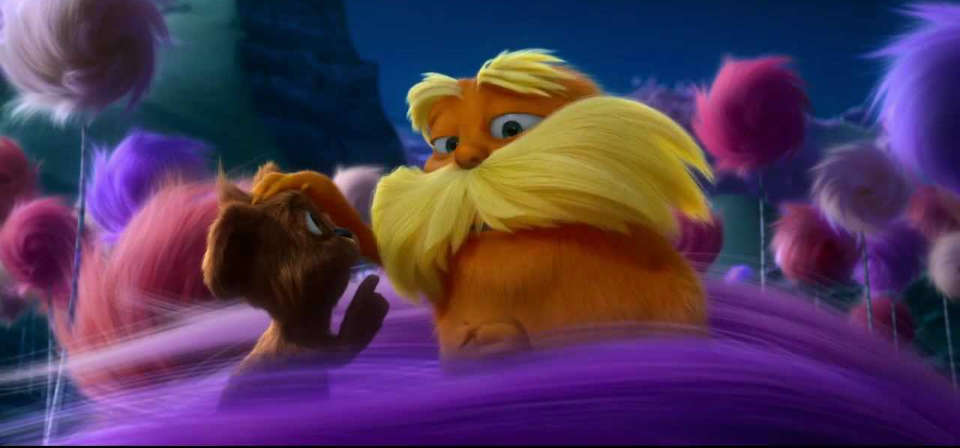
The Lorax (2012)
Well … its heart’s in the right place. Give the filmmakers that. / This isn’t The Grinch or The Cat in the Hat. / It’s not outright ugly, though it slips off the rails. / It wants to be decent. It tries. But it fails.
Arthur Christmas [video]
Here’s my 30-second take on Aardman Animation’s Arthur Christmas.
The Muppets (2011)
This is quite deliberately not a reboot or reimagining or any such thing. Perhaps we can call it a revisiting. Like this summer’s charming Winnie the Pooh (also from Disney), The Muppets is a happy throwback, very much of a piece with material that my generation grew up with, eclipsing the lameness of recent direct-to-video efforts. Who would have thought two classic family franchises that have lain fallow for so long would be reborn in the same year?
Happy Feet Two (2011)
Little ones are “tougher than we think,” a penguin remarks in Happy Feet Two, and you can tell director George Miller believes it. The animated sequel pulls few punches: It’s overshadowed by more darkness, menace, heartache and anxiety than any talking-animal picture I can think of since, well, Miller’s last family-film sequel, the execrable Babe: Pig in the City. Neither the classic Babe nor the original Happy Feet contained any hint of the darkness of the sequels. Apparently Miller’s strategy is to soften kids up first, then drop the bomb.
Puss in Boots (2011)
Banderas’s swashbuckling Puss in Boots first appeared in Shrek 2, quickly establishing himself as one of the most popular supporting characters in the franchise. Now in a starring role in this spinoff, Puss spins the story in a direction strikingly different from the Shrek films.
Tower Heist (2011)
How could anyone in Hollywood have known, as the current batch of movies went into development, that at least three different films about the greed and ruthlessness of the wealthy few and its devastating impact on the masses—the 1% and the 99%—would hit theaters more or less simultaneously in the middle of the Occupy protests?
Crazy, Stupid, Love (2011)
In spite of these problems, I’m more struck by the movie’s generosity and empathy toward all its characters, and by its frank, countercultural clarity that acts such as adultery, divorce, casual sex and promiscuity — however understandable they may sometimes be, and however seemingly rewarding they may feel at the time — not only don’t lead to lasting happiness, not only are obstacles to true happiness, but ultimately bring a great deal of unhappiness, not only for oneself and one’s loved ones, but also to other people as well that another movie might not consider at all.
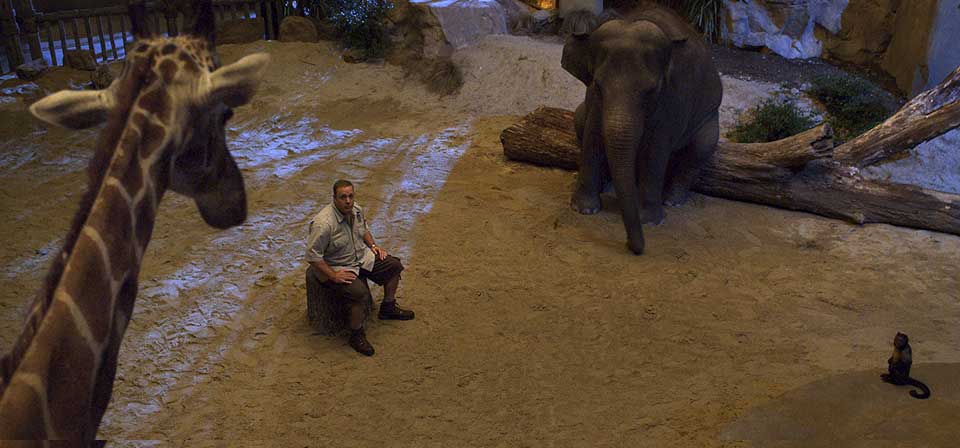
Zookeeper (2011)
Zookeeper is offensive to women, men, children, parents, WASPs, Asians, African-Americans, animals and zookeepers. Also Nick Nolte fans may not be too happy. Have I overstated things? Possibly, but how will we ever know? It is a movie with no conceivable audience. Somewhere in Hollywood are producers who entrusted money and equipment to people who put talking zoo animals in the same movie as Kevin James inadvertently flashing Rosario Dawson and Leslie Bibb with his off-camera member. “Oh! That’s going to be hard to unsee,” Dawson exclaims in dismay. Parents: Think long and hard about those words.
Larry Crowne (2011)
It is with some astonishment that I realize that until now Tom Hanks and Julia Roberts have never played romantic leads opposite each other in a romantic comedy.
Cars 2 (2011)
Visuals aside, Cars 2 is the first Pixar film ever (or at least since A Bug’s Life) that could one could easily imagine as a DreamWorks film—circa Shark Tale perhaps, with its punningly fishified analog of the human world. Or, with its frenetic action and gimmickry, Cars 2 bears some resemblance to a Blue Sky Studios cartoon (circa Robots, say, or Rio, with its world culture flavor). In a word, not only is Cars 2 mediocre, it doesn’t even feel like mediocre Pixar.
Mr. Popper’s Penguins (2011)
While the Atwaters’ book is not exactly a classic, it’s beloved by generations of readers — but not by the people who have brought you this big-screen adaptation starring Jim Carrey. The makers of this film do not love Mr. Popper’s Penguins. At all. It’s hard to believe that this junk was directed by Mark Waters, who presided over the big-screen adaptation of The Spiderwick Chronicles, a smart, scary adaptation of a children’s book series that honors its source material almost as much as Mr. Popper’s Penguins doesn’t.
Tangled (2010)
We really do accept as normal whatever we’re raised with, don’t we? Like, say you’ve lived all your life alone in a lonely tower in a hidden valley, and your golden hair is 70 feet long, and the only mother you’ve ever known — the only person you ever see — comes and goes using your hair as a rope ladder, and she’s never let you so much as set one foot outside, and your hair does this magic trick when you sing that — well, not to give it away, but that would just be life to you, wouldn’t it?
Megamind (2010)
Megamind is a satiric take on the Superman mythos, seen through the eyes of a supervillain who’s part Lex Luthor, part Brainiac. Instead of a rocket ship bearing an infant survivor from a doomed planet to Earth, there are two ships from two planets. Fate deals the infant survivors very different hands: One is a super-powered golden boy who grows up privileged and smugly superior; the other grows up on the fringes of society, an outcast with one asset: his super-brain. It seems the two are destined to battle each other forever … or are they?
The Switch (2010)
The Switch is about an attractive woman in her early 40’s with a history of unfortunate relationships and a gnawing concern that she’s been hitting the snooze button on her biological alarm clock for too long. I can’t imagine why they cast Jennifer Aniston.
Scott Pilgrim vs. the World (2010)
Among the least inspiring phrases in the English language, I wrote in my review of Prince of Persia: The Sands of Time, is “based on a video game.” Scott Pilgrim vs. the World is not based on a video game, but video games are part of its artistic DNA, along with comic books, anime, kung fu movies and music videos. Big difference.
The Sorcerer’s Apprentice (2010)
The first good thing about The Sorcerer’s Apprentice is that it isn’t called The Sorcerer’s Apprentice: Oath of the Dragon Ring or The Sorcerer’s Apprentice: Nesting Dolls of Doom.
Despicable Me (2010)
To his suburban neighbors, Gru is a grumpy bald guy whose house looks like the Haunted Mansion and whose ride makes the Dark Knight’s Batmobile look like a Prius. He’s the one who makes tasteless “jokes” about killing your dog if it goes on his lawn again and pretends not to be home when girls come around selling cookies. You know the type.
Knight and Day (2010)
Little things like plot holes and leaps in logic shouldn’t matter that much when a movie like this is working. Watching Cary Grant and Audrey Hepburn in Charade is a lot of fun even if you’re not completely sure afterward exactly what happened. If True Lies works for you, it’s because of how Arnold and Jamie Lee Curtis sell it, not because the story makes so much sense. When you find yourself nit-picking plot points and character motivations, it’s a sign the movie isn’t working.
Toy Story 3 (2010)
At times Toy Story 3 feels a bit less fleet-footed than its predecessors, though there’s nothing that doesn’t work. Lee Unkrich, who co-directed Toy Story 2, Monsters, Inc. and Finding Nemo, directs with a sure hand. The story is stuffed with wit and invention, such as a couple of premise-bending applications of the Potato Heads’ modular body parts and some hilarious riffing on Ken and Barbie.
Shrek Forever After (2010)
After three Shrek films aimed squarely at adolescents, I’m mildly surprised to find that DreamWorks has made a final chapter aimed more or less at middle-aged men, and specifically husbands and fathers. You know, undemanding middle-aged men going to a Shrek movie. But still.
Julie & Julia (2009)
Toward the end, the two storylines almost converge as Julie’s blog comes to Julia’s attention — and Julia’s reported response leaves Powell in tears. How that twist strikes you make depend in part on which storyline you have felt closer to, on whose movie it is for you. Either way, there’s something for everyone, and if there’s a couple of brief bedroom scenes, for once they involve happily married couples.
Small-Screen Aardman: Wallace & Gromit Shorts and Shaun the Sheep
More wordless Aardman animation on DVD!
The Informant! (2009)
Each of us would like to think that, in such situations as the movie poses, we would do the right thing; in moments of crisis, we tell ourselves that that is what we have done. The Informant! confronts us with the inveterate human capacity for self-justification and self-deception, and the extent to which we are all prone to casting ourselves as the hero of our own drama and the victim of our own tragedy.
Cloudy with a Chance of Meatballs (2009)
What’s the last family film you can think of that name-checked Nikola Tesla and Alexander Graham Bell? When in movie history has the girl ever revealed her true self and become more attractive to the hero by putting on spectacles and pulling back her hair?
Adam (2009)
Writer–director Max Mayer gets a lot right about Asperger syndrome, or AS, from Adam’s verbal literalism and scrupulous honesty to his difficulty gauging emotions in others and assessing what is socially acceptable or not; from his difficulty with eye contact to his driving fascination with a narrow range of topics and cultivation of extensive knowledge and technical vocabulary on those topics.
Ice Age: Dawn of the Dinosaurs (2009)
As a collection of parts, almost an anthology of ideas, Dawn of the Dinosaurs is fitfully entertaining … Alas, Dawn of the Dinosaurs also marks Blue Sky Studios’ descent into the kind of crude and suggestive humor they once left to DreamWorks.
My Life in Ruins (2009)
Ironically, while paying lip service to Georgia’s high standards, My Life in Ruins really has its sights set on Nico’s lowest-common-denominator approach. Although the film shoot was granted unprecedented access to shoot in some of Greece’s most historically significant sites, including the Acropolis, there’s little effort to communicate any real sense of the history and significance of the sites.
Night at the Museum: Battle of the Smithsonian (2009)
Over and over the movie drives home one conclusion: Larry was born to wear the uniform of a museum night guard. The inventions, the managerial decisions, the corny televised banter with cameo-role celebrities … that’s not the real Larry. The real Larry, much like an artifact in an Indiana Jones movie, belongs in a museum.
Madagascar 2: Escape 2 Africa (2008)
Madagascar 2 not only recalls Happy Feet’s satire of religion, it also makes the latter’s coy coming-out subtext look tame compared to its own overt running theme of sexual diversity.
The Lucky Ones (2008)
After running through some pretty contrived paces for much of its running time, The Lucky Ones has some surprises in the last act that ultimately make it more satisfying than it might have been. Honor, sacrifice, and loyalty do count for something, and tough decisions characters thought they would never make turn out to be thinkable after all.
Burn After Reading (2008)
Burn After Reading reminds me a little of the Darwin Awards. It’s morbidly absurdist, thoroughly pointless, and can certainly be funny at times, even acutely so, with a freakish bathos that can be hard to look away from. But if you don’t feel a little queasy for laughing, and perhaps you should, you might at least feel bothered that someone wanted to put the whole thing together for your amusement.
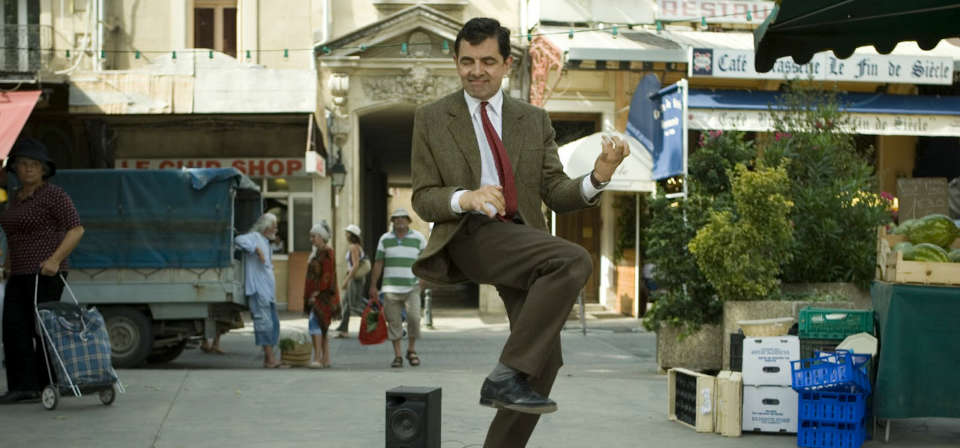
Mr. Bean’s Holiday (2007)
Longtime Bean aficionados may find some of the gags familiar from the TV show and the earlier film. Others may feel (what seems plausible to me) that Atkinson has refined his act and given us “Bean’s Greatest Hits” in their ideal form, culminating in a delightful climax approaching feckless transcendence.
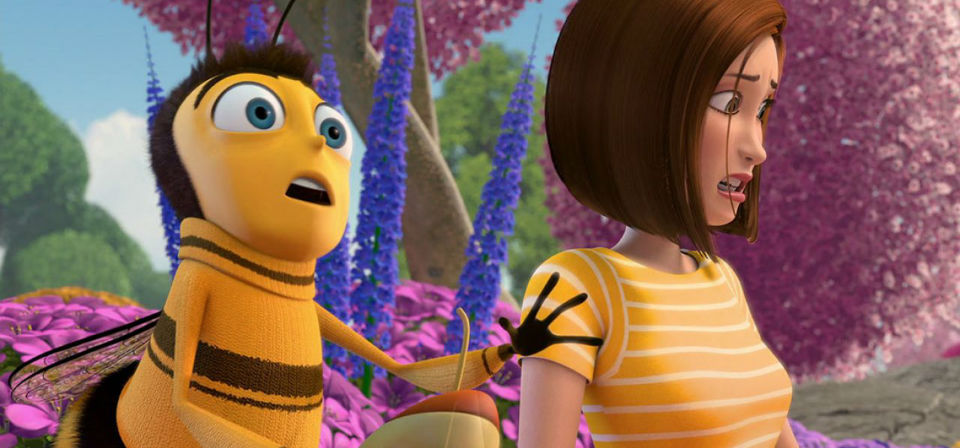
Bee Movie (2008)
As bright-hued as it is dim-witted, Bee Movie is a scattered oddity of a film, combining warm, candy-colored computer-animated visuals, occasionally laugh-out-loud absurdist humor and such profound stupidity about birds and bees — and flowers and trees — that kids watching it will actually lose “facts-of-life” IQ points. Which, for the record, is not a good thing.
Henry Poole is Here (2008)
Like M. Night Shyamalan’s Signs, Henry Poole simply divides the world into two groups of people: those who see signs and miracles, and those who see only coincidence. How either group arrives at or explains particular conclusions, not to mention how people decide which group they belong to in the first place, isn’t explored. We just get Henry with his arms folded defiantly across he chest intoning “Coincidence,” and everyone else serenely shrugging their shoulders saying “Faith.”
The Terminal (2004)
The story wobbles between plotlines and characters that make emotional sense and ones that don’t. And the climax (hastily rewritten and reshot mere weeks before opening day) is pretty much unsalvageable. In Spielberg and Hanks’s professional hands the whole package remains passably entertaining, but much of it doesn’t bear thinking about afterwards — not because the premise is implausible, but because, granted the premise, characters do things that no one would, or should, do under those circumstances.
Kung Fu Panda (2008)
The action, though no more realistic than the most cartoony chop-socky movies, is really intense — too intense for sensitive youngsters. For kids up for rolling with the punches, though, Kung Fu Panda may just be DreamWorks Animation’s most entertaining and endearing CGI cartoon to date.
Son of Rambow (2008)
After making his feature debut with the rather inspiration-challenged big-screen Hitchhiker’s Guide to the Galaxy, director Garth Jennings wisely shifts to a more intimate and personal canvas with Son of Rambow, a quirky British indie, set in the early 1980s, that made a splash at Sundance. Although somewhat scattered and uneven, Rambow has enough heart and wit to sustain its 96-minute running time.
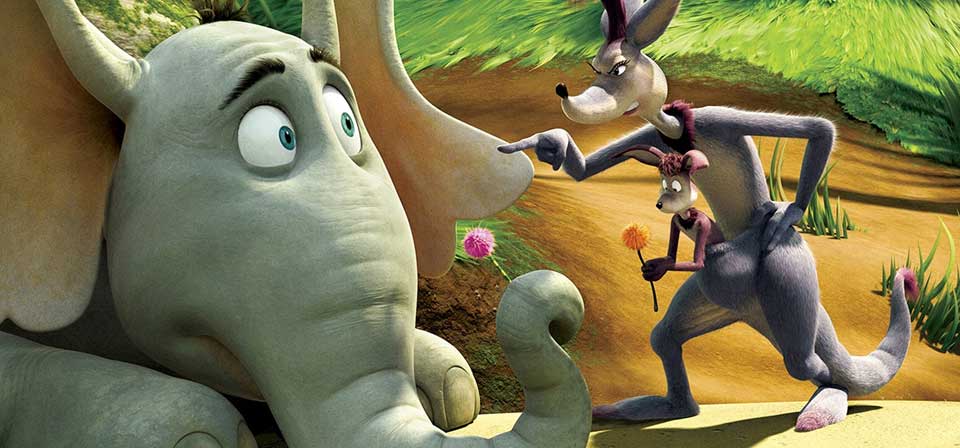
Dr. Seuss’s Horton Hears a Who! (2008)
One book can’t contain Horton’s dogged heroics! / His stoical pluck shows up all other stoics! / And it gets even better! I’m pleased to relate / That Horton’s the very best Blue Sky to date.
Be Kind Rewind (2008)
If I had to put Be Kind Rewind in a box, which is emphatically not where any Gondry film belongs, I might be tempted to call it Lars and the Real Girl by way of Bowfinger — the latter for its comic guerrilla filmmaking, but the former for its similarity of spirit, its gentle absurdism in an ode to benevolence and community togetherness.
Caramel (2007)
As the name implies, Caramel is a gooey, insubstantial confection, often sweet, occasionally cloying, sometimes sticky — in many respects about on a par with the likes of Beauty Shop. The humor is broad, characters stereotypical, the situations formulaic. Yet there’s no good–bad character divide, no requisite A‑story conflict, and few tidy resolutions.
Juno (2007)
Yet it’s right around this point that Juno, which has been clever and insightful, unexpectedly reveals hidden layers of complexity and depth.
Enchanted (2007)
(Written by Suzanne E. Greydanus) Where is the real man here? Giselle’s rapport with Morgan and sweet naiveté are endearing; are we supposed to find Edward’s incompetence and arrogance equally so? Do our female hearts swoon when he checks his teeth in his sword, or boorishly flails it about at everything that moves? Why can’t the prince be an idealized example of chivalry, bravery, strength and honor, as Giselle is of sweetness and goodness?
Lars and the Real Girl (2007)
Lars Lindstrom goes through life doing his utmost not to. Every day he negotiates his world as an obstacle course, and the obstacles are other people. The awkwardness of proximity that many people feel in a crowded elevator as they avoid eye contact with strangers and put conversations on hold is how Lars feels with anybody, anywhere. You could say he is socially maladjusted, except I’m not sure he could be called anything with “socially” in it.
Rush Hour 3 (2007)
Rush Hour 3 is a half-hour of brilliance, preceded by an hour of dreck. That’s a roughly comparable dreck-to-brilliance ratio to the first two Rush Hour movies, I guess, and par for the course for Jackie Chan’s Hollywood films (and a fair number of his Asian ones). It’s just that the earlier Rush Hour movies are hit-and-miss throughout, whereas Rush Hour 3 is basically non-stop missing for an hour, saving all its hits for the end.
Ratatouille (2007)
Ratatouille is a revelation — a delightfully surprising discovery in a genre that seldom surprises even savvy youngsters, a warm and winsome confection that will be treasured by viewers young and old long after the mediocrities of summer 2007 have been justly forgotten.
Evan Almighty (2007)
Harmless, diverting, very mildly uplifting, Evan Almighty offers passable family entertainment meant to appeal equally to Bible-believing conservatives and left-leaning environmentalists.
Shrek the Third (2007)
Shrek the Third continues the deliberate bad taste that is the franchise’s hallmark, with the usual hit-and-miss results… What’s missing is the heart that leavened the first two films.
The Namesake (2007)
At the end of its 122 minutes, perhaps, few if any of the story’s various partial threads have really been resolved. Open-ended and somewhat scattered, The Namesake is generally engaging but feels elusively incomplete. One could say it is about the journey rather than the destination. A more disciplined approach to the screenplay might have distilled Lahiri’s 300-page novel into something more satisfyingly focused. Instead, frequent Nair collaborator Sooni Taraporevala chooses to sketch in and gesture at as much of the book as possible, trusting viewers to supply the rest.
Green for Danger (1946)
Sidney Gilliat’s Green For Danger is an overlooked gem that transplants the trappings of a droll British murder mystery in an unexpected WWII context, with Nazi air raids and an emergency wartime hospital set up in a rural manor home outside London.
Flushed Away (2006)
If Flushed Away doesn’t reach the heights of demented genius of The Curse of the Were-Rabbit or even the lesser charms of Chicken Run, it’s still got a goofy inventiveness that puts it in the better half of this year’s crop of CGI films.
Monster House (2006)
In a way, Monster House is a bracingly icy breath of fresh air, a tween-oriented family film that is unabashedly out to frighten.
Pirates of the Caribbean: Dead Man’s Chest (2006)
The Raiders comparison is more apt here than in the original, where the swordplay and such was more energetic and well-done than inspired. The sequel takes the slapstick swashbuckling to a completely new level, evoking the ingenuity and physical comedy of a Buster Keaton or Jackie Chan set piece, crossed with the Rube Goldberg logic of a Chuck Jones cartoon.
Over the Hedge (2006)
Over the Hedge may satirize suburban foibles, but that doesn’t mean family audiences need to see themselves as the target. Who really likes plastic flamingos, anyway?
Hoot (2006)
Alas, lightning has not struck twice. The similarities between Holes and Hoot only serve to underscore how far short the latter falls from the high standard set by the former.
Ice Age 2: The Meltdown (2006)
Ice Age 2 isn’t really a meltdown, but it’s no bolt from a Blue Sky.
Kind Hearts and Coronets (1949)
In Kind Hearts and Coronets, the driest, darkest, and arguably the best of Ealing Studio’s acclaimed British crime comedies, murder itself is a trivial offense compared to punctilious observance of the highest standards of Edwardian social rectitude, at least for the aristocratic protagonist, Louis Mazzini (Dennis Price), or Lord d’Ascoyne as he is styled after ensuring the deaths of each of the eight relations who once stood between himself and the peerage.
The Awful Truth (1937)
One should be rooting for Cary Grant to get the girl, which means he ought to deserve her — and if that’s more or less the case here, well, it’s only because the girl turns out to be no great shakes either.
His Girl Friday (1940)
Call me an Albany-living mama’s boy, but when Hildy tells her male colleagues in an early scene that she’s going to be a woman, not a news-getting machine, and have babies and take care of them, and give them cod-liver oil and watch their teeth grow, and not have to worry any more about crawling up fire escapes, getting kicked out of front doors, or eating Christmas dinners in one-armed joints — well, I for one think that sounds kind of nice.
The Harold Lloyd Comedy Collection
For fans of silent comedy, it’s the DVD event of the decade: Harold Lloyd, the “Third Genius” of silent comedy (Chaplin and Keaton being the other two), until now almost totally unavailable on DVD, at last enters the modern home-video age in grand style with the The Harold Lloyd Comedy Collection.
The Gold Rush (1925)
New from the Criterion Collection, Charlie Chaplin’s comedy classic The Gold Rush is now available on Blu-ray and DVD in a single edition that includes both the original 1925 silent film and Chaplin’s 1942 reworking of the film in a quasi-sound edition, with humorous, documentary-like narration replacing the intertitles.
Twentieth Century (1934)
Often credited as the first screwball comedy, Howard Hawks’s Twentieth Century is an acerbic satire of show-business ego and superficiality starring John Barrymore and Carole Lombard.

Wallace & Gromit: The Curse of the Were-Rabbit (2005)
Stop-motion animation cult heroes Wallace & Gromit, the brainchildren of British animator Nick Park of Aardman Animations, may not be unchanged in the transition from their charmingly dotty, wildly funny shorts to their first feature-length film, but they’re still recognizably themselves.
Corpse Bride (2005)
As imagined by Tim Burton in stunning, wildly stylized stop-motion animation overtly reminiscent of The Nightmare Before Christmas yet technically far beyond it, this macabre fairy tale becomes, variously, a poignant meditation on the daunting weightiness of the vows of marriage, a raucous danse macabre in jumping jazz rhythms and florid colors, a visually rich celebration of Edward Gorey Gothic-Victorian and Charles Addams grotesque, and, perhaps most surprisingly, a touching portrait of tragedy, doomed love, empathy, and sacrifice.
Back to the Future (1985)
Brilliantly constructed and virtually universal in its appeal, Robert Zemeckis’s Back to the Future blends equal parts hilarity, nostalgia, science fiction, screwball comedy, and white-knuckle suspense in a complex storyline wound tighter than a yo-yo in a centrifuge.
Napoleon Dynamite (2004)
As deadpan as its affectless protagonist, breakout indie phenomenon Napoleon Dynamite is like a Roschach test of viewer empathy.
The Truman Show (1998)
Peter Weir’s The Truman Show is a remarkably layered achievement: a deceptively simple fairy tale; a hilariously subversive satire of media excess and the erosion of privacy; a sly exploration of the paranoid, solipsistic fear that the world around one is somehow staged for one’s benefit and everyone else is in on it; and finally an elegant parable about truth and happiness with evocative religious resonances.
Sky High (2005)
Less than a month after Fox’s dumb, trashy Fantastic Four somehow passed itself off as a family-friendly superhero comedy comes Disney’s Sky High, a film that actually fits the bill.
Just Like Heaven (2005)
Just Like Heaven is the first Hollywood film since Return to Me that I would put in the same league as that earlier film, and that’s saying something.
Willy Wonka & the Chocolate Factory (1971)
Along with Chitty Chitty Bang Bang and The 10,000 Fingers of Dr. T, Willy Wonka illustrates the distinct possibility of telling a fairy-tale like story about a child transported to a fantasy wonderland, with brightly costumed little people singing and dancing and strange dangers to be negotiated, yet winding up with a film that is more a fond tribute to "pure imagination" than a triumph of it.
Charlie and the Chocolate Factory (2005)
Tim Burton’s Charlie and the Chocolate Factory is enough to make any fan of Roald Dahl’s most beloved novel cry — with delight at all the film gets so magically right, and with frustration that in spite of that the film is still nearly ruined by Burton’s obsessions and a spectacularly miscalculated performance by star Johnny Depp.
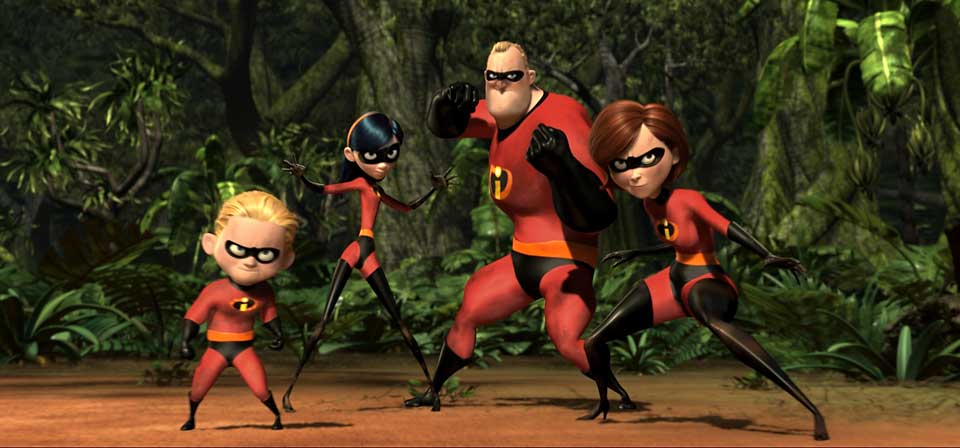
The Incredibles (2004)
The Incredibles is exhilarating entertainment with unexpected depths. It’s a bold, bright, funny and furious superhero cartoon that dares to take sly jabs at the culture of entitlement, from the shallow doctrine of self-esteem that affirms everybody, encouraging mediocrity and penalizing excellence, to the litigation culture that demands recompense for everyone if anything ever happens, to the detriment of the genuinely needy.
Steamboat Bill, Jr. (1928)
The film’s great claim to fame lies entirely in its wholly unexpected third act, which essentially jettisons the amiable comic plot driving the first two-thirds of the film in favor of a wildly inventive and increasingly audacious series of stunts and set pieces as Keaton battles a raging tornado.
The Hitchhiker’s Guide to the Galaxy (2005)
[T]he new Hitchhiker’s Guide has the whimsical look and absurdist feel of Adams’s universe, which remains best known in its novelized form but which originated as a radio series and was later realized as a BBC television series, a set of records, a computer game, and even stage adaptations. What it’s missing is the subversive commentary, the razor-edged deconstruction of human foibles. We get Adams the absurdist, but not Adams the provocateur.
Bride and Prejudice (2004)
Now Nair’s compatriot Gurinder Chadha (Bend It Like Beckham) takes a much more thoroughgoing approach to Pride and Prejudice, going so far as to tweak the title to telegraph that this is Jane Austen gone Bollywood with a capital B — i.e., Bride and Prejudice.
Millions (2005)
Millions is a rare and special family film: a moral parable rather than a morality tale; a film that combines high ideals and hard realities; a story of hope and faith in something more than Santa Claus. Which is not to say that Santa Claus, or rather St. Nicholas, doesn’t show up. But when he pops on a bishop’s mitre rather than the familiar red Santa hat, it’s clear we’re not in Hollywood movieland here.
Robots (2005)
Robots combines the visionary alternate world-building of Monsters, Inc., the flair for gadgetry and gimmickry of an old Fleishers cartoon, and most sneakily of all, the toybox nostalgia of the Toy Story movies, with cleverly worked-in toy and game references — “Operation,” Slinky, Wheelo — that will have adults grinning with recognition.
Stalag 17 (1953)
Grimly hilarious, subversive and defiant, rough around the edges, and more than a little sad, Billy Wilder’s Stalag 17 may have been the inspiration for TV’s “Hogan’s Heroes,” but this is no campy farce.
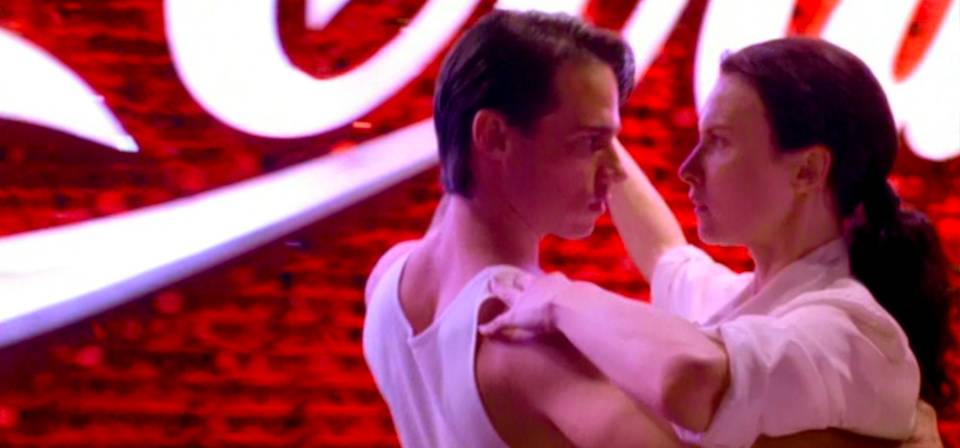
Strictly Ballroom (1992)
Strictly Ballroom starts as an edgy, in-your-face mockumentary satirizing the rigid pretensions of people who take competitive ballroom dancing way too seriously. Then by imperceptible degrees it morphs into a complicated tale of generations and families, ultimately turning in a crowd-pleasing fairy-tale ending.
In Good Company (2004)
It’s not without faults. At times the satire crosses over into silly farce, and, while the last act avoids the most obvious clichés, it’s still a bit tidy. And some of the film’s basic themes seem undermined by an unfortunate subplot involving perplexing decisions by more than one character. But if these faults can’t quite be overlooked, the film’s virtues are rare enough to make the whole package worthwhile.
The Princess Bride (1987)
Rob Reiner’s great cult classic The Princess Bride is one of those rare satiric gems, like The Court Jester and Galaxy Quest, that doesn’t just send up a genre, but honors it at the same time, giving us the excitement and pleasure of the real thing as well as the laughs of a comedy.
Lemony Snicket’s A Series of Unfortunate Events (2004)
If you prefer movie reviews about pleasant and uplifting films in which goodness is suitably rewarded, evil is suitably punished, and children are not placed in excessive peril or disagreeable circumstances, you may wish to read some other review.
Christmas with the Kranks (2004)
What on earth was anyone thinking? Luther’s so Kranky he can’t just skip the Christmas-Eve shindig… he wants a "total boycott," even of charitable donations — despite the fact that they’re saving money on the cruise over against their usual seasonal expenditures. (That his wife Nora, played by Jamie Lee Curtis, absolutely refuses to go along with his plans until Luther caves on the charitable donations is some consolation, but not nearly enough.)
The Fighting Temptations (2003)
Here is a film so woefully misconceived, so completely devoid of even generic, safely banal Hollywood spiritual uplift, that it made me long for the spiritual depth and religious meaning of Sister Act and Bruce Almighty.
The SpongeBob SquarePants Movie (2004)
(Written by Jimmy Akin) SpongeBob SquarePants (Tom Kenny) is a sponge who wears square pants and who lives in a town on the ocean floor called Bikini Bottom (get it?). He’s also an ace crackerjack fry cook in a greasy spoon called the Krusty Krab.
My Man Godfrey (1936)
Possibly the screwiest of all screwball comedies, My Man Godfrey is the ultimate Depression-era satire of the idle rich and tribute to the noble poor.
Shark Tale (2004)
Incidentally, DreamWorks’s Shrek and Shrek 2 were based on childhood fairy tales, roughly corresponding to Pixar’s Toy Story and Toy Story 2, which were about childhood playthings. This makes Monsters, Inc. the only Pixar film to date with no DreamWorks parallel (though November will see a second, The Incredibles).
The Shop Around the Corner (1940)
Who but Ernst Lubitsch could have pulled off such a winning romantic-comedy classic that dares to include, but is not marred by, such tragic undercurrents, with a frank subplot involving adultery, attempted suicide, and the collapse of a marriage?
Ella Enchanted (2004)
Borrowing a page from Sleeping Beauty, therefore, Levine came up with the central dramatic conceit of her Newbery Honor-award winning book, Ella Enchanted: From her infancy Ella has been under a fairy curse (here bestowed in cluelessness rather than malice) obliging her to obey any imperative statement directed at her, from anyone. The moral of the story, in the author’s own words in interviews and letters to readers, is: "Don’t be too obedient!"
Toy Story 2 (1999)
It’s the best kind of sequel, the kind that neither repeats the original nor merely adds to it, but lovingly builds upon it and goes beyond it into narrative and emotional territory no first film could reach.
Toy Story (1995)
Toy Story, the first-ever fully computer-animated feature and the film that put Pixar Studios on the map, is more than a technical tour de force. It’s moviemaking alchemy — a breathtakingly perfect blend of wide-eyed childhood wonder and wry adult humor, yesteryear nostalgia and eye-popping novelty, rollicking storytelling and touchingly honest emotion.
Grandma’s Boy (1922)
More charming than uproarious, Grandma’s Boy isn’t in the same league as films like >The Kid Brother, Speedy, and Safety Last! However, it’s well structured for its day, and set the pattern for Lloyd’s best comedy features by helping to define the definitive dramatic story-arc for Lloyd’s already-famous “Glasses Character” persona.
Benji Off the Leash! (2004)
Benji Off the Leash is undoubtedly the first dog movie ever made that thinks that a happy ending for a boy and his dog is not for the boy to get to keep the dog, but for the dog to go off to Hollywood to make a motion picture.
City Lights (1931)
City Lights is the quintessential Chaplin film — both the most perfectly crafted and satisfying of all his films, and also the most representative of all the different textures and tones for which Chaplin is remembered, from slapstick and pantomime to pathos and sentiment, farce and irreverence to melodrama and social commentary.
Our Hospitality (1923)
Buster Keaton’s first feature-length comedy is one of his best, a comic gem set against a backdrop of a Hatfield-McCoy style family feud. Raised far from the scene of generations of “McKay-Canfield” violence, young Willie McKay (Keaton) knows nothing about the bad blood between the two families — until the time comes for him to go home and claim his inheritance.
Around the World in 80 Days (2004)
Without a doubt, the best thing about Frank Coraci’s Around the World in 80 Days is the fight scenes.
Mean Girls (2004)
(Written by Suzanne E. Greydanus) At school, Cady is befriended by two social outcasts: an artsy girl named Janis (Lizzy Caplan) with an all-black goth look, and her sidekick Damian (Daniel Franzese), whom Janis describes as “almost too gay to function.” She is also befriended by the clique of popular girls (dubbed “the Plastics” by Janis), queened by Regina (Rachel McAdams), who think Cady pretty enough to be their friend despite her ignorance of proper social rules for high-school “success.”
The Lavender Hill Mob (1951)
Much of the comedy comes from reversal of stereotypes, with the mild-mannered, middle-class Holland aspiring to the role of criminal mastermind, and Holland’s elderly landlady (Edie Martin) knowledgeably conversing with bemused bobbies in street slang learned from dime-store crime fiction. And while the caper-gone-wrong comedy genre has been done to death in recent decades, The Lavender Hill Mob avoids most of what became the clichés of the genre.
Shrek 2 (2004)
If Pixar’s Toy Story movies connect with the child in all of us, DreamWorks’ Shrek pictures are aimed squarely at our inner adolescent. I suspect I may be more in touch with my inner child than my inner adolescent.
Shrek (2001)
Loosely based upon a story by children’s author William Steig (Sylvester and the Magic Pebble), Shrek is a satiric, updated fairy-tale love story, sort of like The Princess Bride, if André the Giant had been the hero, and had worn Lou Ferrigno body paint. And if Princess Buttercup did Matrix-style wire-fu and knocked out bad guys.
Fiddler on the Roof (1971)
L’Chaim! Life itself, joyous and tragic, is the subject of the boisterous, comic, heartbreaking vision of Fiddler on the Roof.
Emma (1996)
If love makes the world go round, the dizzily whirling globe in the opening title credits of Douglas McGrath’s Emma is a clear statement of intent regarding the film’s theme. And when we see the globe is a painted model spinning on a thread in the hand of Emma (delightfully effervescent Gwyneth Paltrow), it’s clear how Emma sees herself — pulling the strings, orchestrating the happy convergences that make the world go round.
Cheaper by the Dozen (2003)
The Gilbreths were certainly disciplined and well-behaved, but there was also something a bit "off" about the whole family, and one could be excused for getting the definite impression that only a professional efficiency expert like Mr. Gilbreth could even think about having so many offspring.
Clifford’s Really Big Movie (2004)
Reviewed by Sarah E. Greydanus, age 9, and Steven D. Greydanus
Good Morning (1959)
Formality and courtesy attend adult interactions, but beneath the surface lurk petty misunderstandings, resentments, suspicions. A boy complains that adult conversation is bloated with meaningless, empty pleasantries, while his friends prefer to engage each other with an amusement that appears to be an Asian equivalent of “Pull my finger.”
Eternal Sunshine of the Spotless Mind (2004)
Obviously, a Kaufman film called Eternal Sunshine of the Spotless Mind isn’t going to be as cheerful and wholesome as the title might suggest. Despair, isolation, and loneliness continue to hang like a fog across his world. Eternal Sunshine also resembles his other films in its characters’ milieu of general dissipation, casual sex, drug use, and so on.
The General (1927)
Arguably the greatest of Buster Keaton’s silent comedies, The General begins with a single, brilliantly sustained premise and works it into an engaging story that combines edge-of-your-seat excitement, stunningly conceived stunts and sight gags, spectacular set pieces, touching sentiment, and a rousing finale.
Agent Cody Banks 2: Destination London (2004)
Unfortunately, while this sequel is the least morally problematic of Muniz’s three big-screen outings, it’s also far and away the lamest, lacking utterly its predecessors’ fitful humor and excitement. When the high point of your movie involves a Queen Elizabeth lookalike getting down to a youth-orchestra Euro-pop version of Edwin Starr’s "War," something has gone disastrously wrong.
Best in Show (2000)
The good news about Best in Show, the latest film from mockumentary veteran Christopher Guest (Spinal Tap, Waiting for Guffman), is that it’s funny — sometimes very funny. Guest is a sort of purist who creates the impromptu feel and immediacy of documentary by working from a short outline rather than a finished script; so his players really are ad-libbing to a significant degree.
A Night at the Opera (1935)
The fact is, A Night at the Opera is one of a kind, for which we can all be grateful. But it’s also something more. The most successful Marx Brothers film in their day both critically and popularly, A Night at the Opera is one of the two front-runners — along with Duck Soup, which was not successful at the time — for the best and funniest Marx Brothers feature ever. Opera was also reportedly Groucho’s favorite.

The Court Jester (1956)
Not only does it terrifically succeed where movies like Mel Brooks’ Robin Hood: Men in Tights miserably fail, The Court Jester also as merry, high-spirited, and wholesome as the adventures it parodies, with none of the cynical, anarchic spirit (or content issues) of the likes of Monty Python and the Holy Grail.
Cyrano de Bergerac (1990)
Despite numerous cinematic adaptations — including Steve Martin’s cute romantic-comedy update Roxanne — the definitive Cyrano is probably Jean-Paul Rappeneau’s boisterous, full-blooded film, with France’s greatest actor, Gérard Depardieu, making the part forever his own.
Holiday (1938)
Why is The Philadelphia Story so well known, while the equally unforgettable Holiday, from the same director, writers, and leads, suffers comparative neglect?
The Navigator (1924)
Buster Keaton’s most popular vehicle in his own day, and said to be Keaton’s favorite of his own films, The Navigator isn’t as sophisticated and satisfying as his best work (e.g., The General), but it’s still brilliant slapstick comedy, with a rousing third act and a slam-bang climax.
Bringing Down the House (2003)
"Everything he ever needed to know," blurbs the tagline, "she learned in prison." More accurately, everything he ever needed to know, she learned in the ghetto; the larger point is that she has everything to teach and nothing to learn, and he has everything to learn and nothing to teach.
A Christmas Story (1983)
Like many Christmas-themed movies, it offers no insight into the true meaning of Christmas, but it brims with insight into the human condition — particularly the condition of boys at Christmastime.
Holiday Inn (1942)
True to type, Crosby plays nice and Astaire shallow: Jim (Crosby) loves his dance partner and wants to marry her and settle down, but Ted (Astaire) wants to dance with her, and steals her away from Jim. Heartbroken, Jim retires to the Connecticut farm where he had hoped to settle down, but soon finds that show business is in his blood, and hits on the novel idea of turning his farmhouse into a dinner theater that operates only on holidays.
Oklahoma! (1955)
Oklahoma! was the first of Rodgers & Hammerstein’s musical collaborations, and it changed the face of musical theater.
Support Your Local Sheriff! (1969)
James Garner brings a variation on his "Maverick" persona to this classic satirical Western that, even more than Destry Rides Again, does for Westerns what The Princess Bride did for fairy-tale fantasy, at once spoofing and honoring the genre’s conventions and clichés.
Father Goose (1964)
Cary Grant cheerfully plays against a lifetime of typecasting in this modestly entertaining romantic comedy with comic echoes of The African Queen and Heaven Knows, Mr. Allison, directed by Ralph Nelson (The Lilies of the Field).
Lilies of the Field (1963)
Sidney Poitier won a Best Actor Oscar for his portrayal of Homer Smith, a cheerful, itinerant Baptist handyman who one day pulls off the road and approaches a house with no more thought than to get water for his car radiator.
Platinum Blonde (1931)
This theme of romantically linking an upper-class society girl and a man beneath her station would become a popular device in screwball comedies, appealing to Depression audiences both as escapist entertainment and as satire of the idle rich and celebration of the hardworking poor.
Big Fish (2003)
Like Haley Joel Osment in Secondhand Lions wanting to know the truth about the tales of his uncles’ alleged exploits, Ed’s son Will (Billy Crudup) wants to know whether his dying father really was a Big Fish in a small pond, or whether his father’s tales were just Big Fish stories. Big Fish also echoes Secondhand Lions by ending with a funeral scene that provides some answers as Will finally meets certain individuals from his father’s past.
Elf (2003)
(Written by Jimmy Akin) Elves love to tell stories, or so Papa Elf (Bob Newhart) tells us at the beginning of this elf story. It is an unusual tale in that it is the other side of all the changeling stories that have circulated in folklore for centuries. Instead of being the tale of a fairy raised among mankind, it is the story of a human raised among elves.
Top Hat (1935)
The quintessential Fred-and-Ginger vehicle, Top Hat features some of the most glorious, memorable dance sequences ever filmed.
Men in Black (1997)
Based on the whimsical comic book series of the same name, Men in Black looks superficially like another Independence Day-style big-budget summer special-effects extravaganza with a catchy three-letter acronym. Yet MIB is smarter, leaner, funnier, and more human than most entries in the genre, relying less on spectacle than on the chemistry of the two leads and the wit of the script for its appeal.
I.Q. (1994)
Meg Ryan and Tim Robbins are cast somewhat against type: Ryan often plays bubbleheaded and Robbins brainy, but here Ryan is a science whiz, if a bubbly one, while Robbins is a grease monkey, if a thoughtful one. The real twist, though, is that Catherine (Ryan) happens to be the niece of Albert Einstein — and, while she has a brainy fiancé, he’s a twit, and her uncle Albert decides that she really needs someone like Ed.
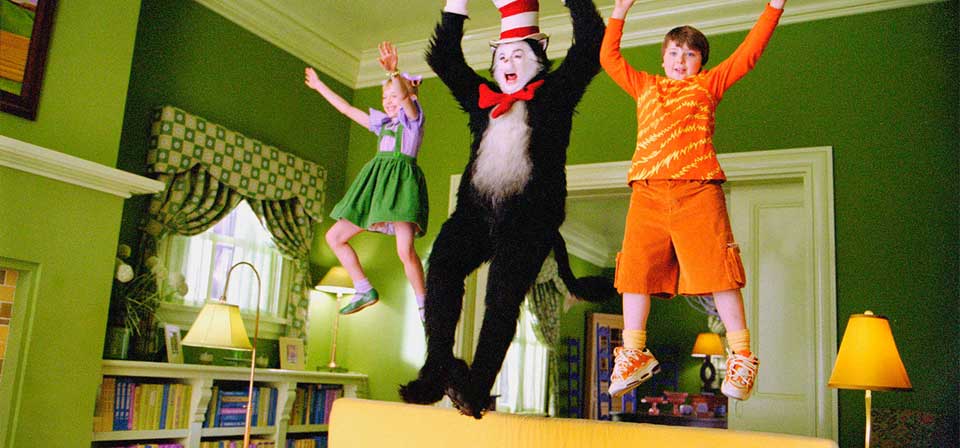
The Cat in the Hat (2003)
Yes, the Cat now has mojo — yeah, baby, groovy! / Except he goes “OH yeah!” instead in this movie. / What’s next? Will the Sneetches get wild and crazy? / Will the Lorax get jiggy with Daisy-Head Mayzie?
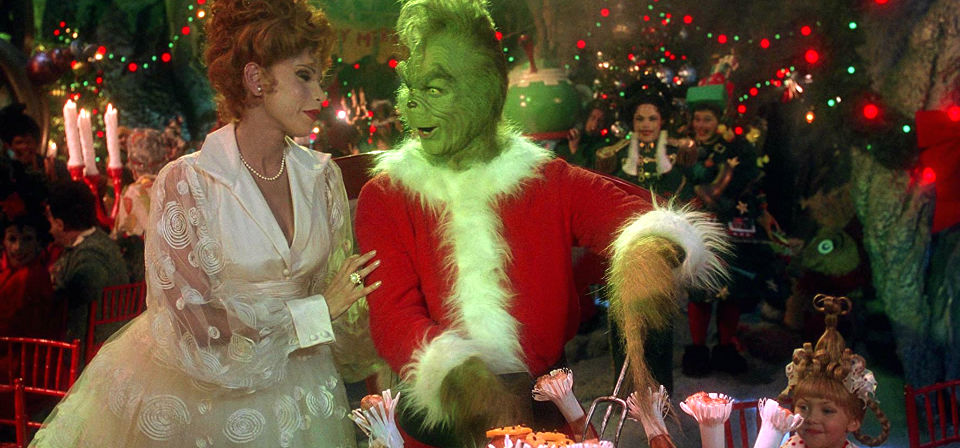
How the Grinch Stole Christmas (2000)
By the time that you read this short essay of ours / The Grinch will have made ten squintillion more dollars! / The people have spoken! The Grinch is a hit! / So who cares if some critic writes critical crit?
Scooby-Doo (2002)
Scooby Dooby Doo
And Shaggy too
You both look and sound great.
But Daphne, you’re too Buff
Fred thinks he’s tough
And Velma — wow, you’ve lost weight!
Pirates of the Caribbean: The Curse of the Black Pearl (2003)
The most remarkable thing about Pirates of the Caribbean: The Curse of the Black Pearl is neither Johnny Depp’s mesmerizing performance, nor ILM’s literally eye-popping skeletal ghost-ship crew, but the sheer fact that the movie works at all.
The Santa Clause 2 (2002)
Like those MasterCard ads that, while admitting that “there are some things that money can’t buy,” still manage to suggest that even these things are somehow among the many benefits of using MasterCard, The Santa Clause 2 is strangely reticent about the idea that Christmas is ultimately about anything other than presents from the red-suited guy.
Looney Tunes: Back in Action (2003)
(Written by Jimmy Akin) Kids will definitely want to see it, as will die-hard adult fans of the Looney Tunes characters. For their purposes, the movie is a resounding success. It gives us a big screen adaptation of the Looney Tunes characters which is faithful to the characters we grew up with. Their comic sensibilities are the same, the timing is the same, even many of the jokes are the same. And that’s part of the problem: There is a little too much sameness about all this.
Duck Soup (1933)
Probably the greatest and funniest film from one of the cinema’s funniest acts, Duck Soup is as absurdly nonsensical as comedy can be and still be about something.

Shadow of the Vampire (2001)
The making of Nosferatu — the first (if unauthorized) film version of Bram Stoker’s Dracula, and one of the 45 films on the Vatican film list — has passed into legend. Denied rights to Dracula by Stoker’s widow, German director F. W. Murnau simply had an adapted screenplay written with alternate character names: Count Dracula became "Count Orlock," Jonathan Harker became "Thomas Hutter," and so on. (Substantial changes were so minimal that at least one English-language edition actually restores Stoker’s original names in the title cards.)
Willard (2003)
The original 1971 Willard, a nasty B-grade horror flick about an oppressed misfit whose only friends are an ever-growing army of rats, was not a movie that cried out for a remake. Given the decision to make one, though, it’s hard to imagine a more fitting casting choice than Crispin Glover.

Pieces of April (2003)
Slyly, disarmingly, this bittersweet comedy-drama got past my defenses and got me in its corner, caring about its flawed, wounded characters, wanting to see them heed their better angels and overcome the legacy of their past mistakes and disappointments.
Good Boy! (2003)
Take Two: The genial, blandly amusing tale celebrates the bond between man and dog, and occasional mildly crude humor is limited to flatulence jokes and the like. Kids won’t notice, but attentive parents will be irked that the filmmakers saw fit to insert fleeting depictions of an apparent homosexual couple in the supporting cast.
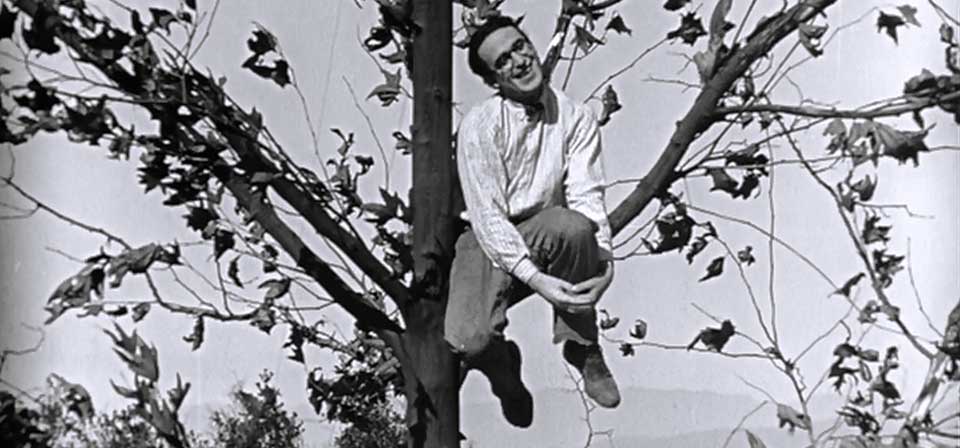
The Kid Brother (1927)
As a first introduction to silent film, I would pick The Kid Brother over the best of Chaplin (Modern Times, City Lights) or Keaton (The General, Steamboat Bill, Jr.) every time.
It Happened One Night (1934)
She’s fleeing from her concerned father (Walter Connolly) and returning to the shiftless beau (Jameson Thomas) she married in a civil ceremony to spite her father (who had her whisked away from the service, so it’s not final legally or sacramentally).
Sabrina (1954)
The prologue, with its storybook-like, slightly arch voiceover narration finely read by Audrey Hepburn, suggests a charming fairy tale with a satiric subtext. And, indeed, Sabrina, Billy Wilder’s delightful romantic comedy starring Hepburn, Humphrey Bogart, and William Holden, is a sort of Cinderella story, with a chauffeur’s daughter who is transformed into the belle of the ball and dances with the prince — except that the "prince" is, if not a beast, at least a shallow cad, while the real love interest is almost more a frog than a prince.
Friendly Persuasion (1956)
Scenes of silent, unstructured Quaker meetings are contrasted without comment or judgment to the boisterous singing of the local Methodist church, but — despite Eliza’s best efforts — the film is largely an account of the compromises the Birdwells are and aren’t willing to make. Their principles are repeatedly put to the test, at the local fair, on the Sunday morning ride to the meeting house as a smug neighbor blows past Jess’s slow horse every week, and so on. One of the best vignettes concerns an impasse between Jess and Eliza over the shocking purchase of an organ, and the delightful way the conflict is finally resolved.
Bringing Up Baby (1942)
The zaniest, most delightful, most romantic screwball comedy of them all, Bringing Up Baby features Katherine Hepburn at her effervescent best and Cary Grant in a marvelous performance combining stuffiness and injured dignity with his usual debonair charm.
Secondhand Lions (2003)
In the end, though, Secondhand Lions is a pleasant and entertaining film that’s neither as demanding nor as satisfying as the superior Holes. The setup promises more early conflict than the first act delivers, and the story-arc doesn’t give the protagonist enough to do. Beyond that, the film gestures at moral lessons it never quite fleshes out or illustrates, and what ought to have been a key plot point is relegated to a tacked-on coda, depriving it of the crucial significance it should have had.

What’s Up, Doc? (1972)
Yet where Hepburn’s character was merely flighty, Judy Maxwell exists, like the Cat in the Hat and Bugs Bunny (note the title line and the carrots she munches in one scene), in the mode of the Trickster archetype, with inscrutable motives, capricious behavior, and almost preternatural abilities, capable of whimsically making Bannister’s life a living nightmare — or putting things to rights again at a moment’s notice.
Holes (2003)
Holes manages that rare trick of faithfully evoking what was special about the book without becoming slavish or by-the-numbers. Davis captures the book’s blend of coming-of-age realism, tongue-in-cheek grotesquerie, fantasy, and adventure, and capably navigates the plot’s multiple timelines and settlings.
Matchstick Men (2003)
When his supply of meds unexpectedly dries up, Roy predictably disintegrates, much to Frank’s concern. Soon, though, Roy is seeing a psychiatrist (Bruce Altman, Changing Lanes), who not only provides the medication he needs, but gets him talking and thinking about his life — in particular the woman who walked out on him fourteen years ago, and whether or not she was pregnant at the time.
Rugrats Go Wild! (2003)
(Written by Jimmy Akin) When Cartoons Collide!!! That’s what they could have used as a tag-line for Rugrats Go Wild.
Rugrats in Paris (2000)
(Written by Jimmy Akin) The second Rugrats movie begins with a wedding: little Tommy Pickles’ widowed grandfather, Lou, is finally marrying his late-in-life flame, Lulu.
The Rugrats Movie (1998)
(Written by Jimmy Akin) Changes are coming to the pastel-colored Rugrats universe, and The Rugrats Movie brings them. It is the biggest thing that has happened to the series in its nearly ten year run: a new Rugrat is being born.
The Medallion (2003)
Jackie’s current string of Hollywood buddy movies (the Rush Hour and Shanghai flicks; The Tuxedo) have brought him success in the U.S. — but at a price. For one thing, he’s never been allowed to do the kind of really elaborate, extended action-comedy sequences that were the heart and soul of solo efforts like First Strike and Rumble in the Bronx. For another, he’s had to share the spotlight with a string of costars ranging from alternately funny and irritating (Owen Wilson, funny in Shanghai Noon but irritating in Shanghai Knights, and Chris Tucker, alternatingly funny and irritating throughout both Rush Hour movies) to just plain irritating and not funny (Jennifer Love Hewitt in The Tuxedo).
Rush Hour (1998)
After fifteen years of trying, Jackie Chan finally broke into the U.S. market with Rumble in the Bronx and Jackie Chan’s First Strike; but it wasn’t until Rush Hour that he really connected with mainstream American audiences.
Rush Hour 2 (2001)
Rush Hour 2 follows so closely in the footsteps of its hugely successful predecessor that an actual review is practically unnecessary.
Shanghai Knights (2003)
That includes this film’s predecessor, Shanghai Noon, which, as its witty title suggests, was a clever East-meets-Old-West tribute to the classic Hollywood Western. This sequel, set in London, barely manages to be a tribute to Shanghai Noon. Yet in his inventive, elaborate stunt choreography Jackie pays wordlessly eloquent homage to the great physical performers of the past: The Three Stooges, Gene Kelly, Keystone Cops, Harold Lloyd. And two ladder-fu sequences recall one of Jackie’s own memorable triumphs in Jackie Chan’s First Strike.
The Tuxedo (2002)
The suit is in fact the Tactical Uniform Experiment (TUX), a high-tech weapons system that acts directly on the user’s nervous system, instantly enabling Jimmy — who, unlike most of Jackie’s characters, has no special skills of his own — to dance like Fred Astaire, climb walls and ceilings like Spider-Man, and, of course, fight like Jackie Chan.

Roman Holiday (1953)
Audrey Hepburn is utterly beguiling in her star-making role opposite Gregory Peck in Roman Holiday, a delightful romantic comedy about a poised young princess of an unspecified European country who spends a magical day with an American reporter (Gregory Peck) in the Eternal City, playing hooky from her official duties.
Freaky Friday (2003)
(Co-written with Suzanne E. Greydanus) In the very end there’s a scene in which Anna’s grandfather (thrown into the movie as a hard-of-hearing joke) is lamenting that “youth is wasted on the young.” Too bad the makers of this new Freaky Friday forgot that.
Monsieur Beaucaire (1946)
Beaucaire (Hope) is barber to Louis XV of France — until the former’s romantic altercations with a chambermaid named Mimi (Joan Caulfield) inadvertently result in banishment for both Mimi and himself. At the same time, the king finds it expedient to rid the court of the Duc le Chandre, a renowned swordsman and celebrated ladies’ man, by making a political marriage between le Chandre and Princess Maria of Spain (Marjorie Reynolds).

Road to Morocco (1942)
This time out the boys take their Road act to Arabian Nights territory, where, as usual, they sing (especially Bing), crack wise (especially Bob), and vie over Lamour, who again has an agenda of her own. The story, which is taken about as seriously as the plot of a typical Looney Tunes cartoon, has Bing and Bob shipwrecked and washed up on the road to Morocco.
My Favorite Blonde (1942)
One of Bob Hope’s best comic-thriller vehicles, My Favorite Blonde benefits from its semi-serious spy-thriller ambiance, tolerably cogent plot, scene-stealing penguin, and above all one of the more human, less caricatured, less one-dimensionally narcissistic characters in Hope’s movie oeuvre.
Spy Kids 3-D: Game Over (2003)
If Spy Kids 3-D: Game Over were consistent, that protest would become Juni’s mantra, repeated every thirty seconds or so from that point on until the end of the film. Then again, if Spy Kids 3-D were consistent — about anything at all — it might actually start making some kind of sense.
Blackbeard’s Ghost (1968)
Highlights include an ominous retelling of the story of Blackbeard’s curse and a slapstick scene pitting the heroes against the gangsters. Undeniably silly and somewhat dated, Blackbeard’s Ghost remains harmless, modestly entertaining family fare.
Spy Kids 2: Island of Lost Dreams (2002)
In the original Spy Kids, dashing spy parents Gregorio and Ingrid Cortez (Antonio Banderas and Carla Guigino) exchanged the glamorous world of espionage for the even greater adventure of raising a family. Their children Carmen and Juni (Alexa Vega and Daryl Sabara) weren’t actually "Spy Kids" — a term that in the movie actually applied to a line of robotic child warriors designed by the only somewhat sinister Fegan Floop (Alan Cumming) — but became entangled in their parents’ exotic former life when the latter were captured by Floop’s forces.
Spy Kids (2001)
The press kit calls it "James Bond for kids," but this over-the-top fantasy romp might be more accurately described as a family-friendly True Lies: The Next Generation, or even a married-with-children Austin Powers — all with Willy Wonka-style wonkiness and inspired set design straight out of Dr. Seuss.
The Philadelphia Story (1940)
Like the heroines of The Awful Truth and His Girl Friday, Katherine Hepburn plays a divorcée caught between flawed ex-husband Cary Grant and a respectable but somehow unsuitable fiancé (John Howard). But The Philadelphia Story goes beyond the formula by throwing in surprise contender Jimmy Stewart as a disgruntled novelist-reporter — an unexpected source of conflict and uncertainty that eliminates the need for Grant to resort to the underhanded tricks he needed to show up his rivals in Awful Truth and Girl Friday.
Destry Rides Again (1939)
A classic satirical action-comedy Western, Destry Rides Again pits mild-mannered sheriff’s deputy Jimmy Stewart — a reverse type of the typical John-Wayne two-fisted straight-shooting cowboy hero — against a lawless town full of swindlers and murderers where sheriffs tend to wind up dead.
My Big Fat Greek Wedding (2002)
From a moral-spiritual perspective, the film has two flaws: It takes an indulgent view of the couple’s premarital intimacy, and it depicts the groom-to-be’s Greek Orthodox baptism in purely cultural, non-religious terms ("I’m Greek now," he says afterwards). Fortunately, these isolated lapses are more than overshadowed by the film’s redemptive pro-family themes, memorably summed up by Toula’s father in a final speech full of genuine warmth.
Punch-Drunk Love (2002)
Regarding Punch-Drunk Love, much has been made of the sense of not knowing what’s going to happen next. Anderson’s opening scene is like a manifesto of unpredictability. Opening with a phone conversation in a stark warehouse space, the scene follows Barry Egan (Sandler) outdoors, where the morning waits in expectant silence for the day to begin, as the audience waits for the movie to begin. What kind of day will it be? What sort of movie are we watching?
The Animal (2001)
Funnier, perhaps, than anything in The Animal - which isn’t saying much - are the opportunities for critics to make "Survivor" jokes inspired by the presence of costar Colleen Haskell, the elfin-faced young thing who became a celebrity during the course of the CBS monster hit.
Charade (1963)
Often described as "the best Hitchcock movie Hitchcock never made," Charade stars Cary Grant and Audrey Hepburn in a sparkling thriller with overtones of screwball romantic comedy — or is it the other way around?
The Emperor’s New Groove (2000)
The Emperor’s New Groove is really about another new groove — Disney animation’s. By 2000, the old Disney-as-usual wasn’t selling any more, and Disney was ready to begin trying new things.
Moulin Rouge! (2001)
Damning with faint praise? More like praising with faint damns. Moulin Rouge! is a failure: a towering monument of wasted potential, of lost opportunity, of good ideas gone bad and bad ideas gone amok. It’s got the same attention-grabbing take-no-prisoners style (though on a far larger scale) as Luhrmann’s first film, the sublime Strictly Ballroom; but that film had something Moulin Rouge! can’t be bothered with: characters who emerged from their situations as real and likeable people. Moulin Rouge! even recycles plot elements from the earlier film: A naive but talented young outsider falls for a driven, unattainable professional whose Svengali-like handlers oppose the relationship for self-interested reasons. There’s even a climactic scene that mirrors the grand finale of Ballroom in such specific detail that Luhrmann could sue himself for plagiarism; but what he can’t replicate is the first film’s heart appeal.
Mr. Blandings Builds His Dream House (1951)
Unlike the similarly titled Capra comedies Mr. Smith Goes to Washington and Mr. Deeds Goes to Town — which centered on simple, honest rural folk colliding with urban disingenuity — Mr. Blandings Builds His Dream House is about the foibles and woes of an urban family whose disjointed lifestyle leads them to fumblingly seek a better life in the countryside.
Alex and Emma (2003)
Take Two: The big problem: Neither set of romantic entanglements is actually romantic, and neither set of characters is interesting. Nonmarital affairs in both storylines include an energetic though non-explicit bedroom scene played for laughs.
Hey Arnold! The Movie (2002)
(Written by Jimmy Akin) Nickelodeon’s animated "Hey Arnold!" TV series, created by the Snee-Oosh animation house, is one of the better cartoon shows around.
Jonah: A VeggieTales Movie (2002)
(Review by Mark Shea) I know. It sounds uninspiring on paper, if you haven’t seen them. But — you gotta trust me on this — these guys are really funny, a sort of strange brew mixing Monty Python, MTV, your third grade Sunday School teacher and a tiny bit of Robin Williams — all with a G rating.
The Powerpuff Girls Movie (2002)
(Review by Jimmy Akin) The City of Townsville… is in desperate need of heroes!
Two Weeks Notice (2002)
(Written by Jimmy Akin) From its opening minutes, Two Weeks Notice promises to be the story of how two mismatched, lovable losers get together and fall in love.
Hollywood Homicide (2003)
The only thing that makes this particular film worth noting is the melancholy milestone it marks in the career of the man who was once Hollywood’s biggest star: It has now been a full decade since Harrison Ford took on a role worth caring about.
National Security (2003)
Martin Lawrence rants endlessly against the White Man and Steve Zahn tries to endure him in the obnoxious odd-couple action-comedy National Security (Columbia), directed by Dennis Dugan.
Bruce Almighty (2003)
Theologically speaking, the question was absurd and meaningless; but the answer, I think, contained profound insight. God is both the source and the goal of our being, the meaning as well as the master of our lives. Imagine reality without God, and life becomes meaningless; imagine divine omnipotence at the disposal of anything other than divine love, and existence becomes infinite horror.

Dogma (1999)
Like the creators of Dogma, I feel the need to begin with a disclaimer of my own. This review is an exercise in film criticism and commentary informed by Christian faith. It is neither an anti-Dogma activist polemic nor a pro-Dogma apologetical treatise. I come not to praise Kevin Smith, nor to bury him, but to critique his work.
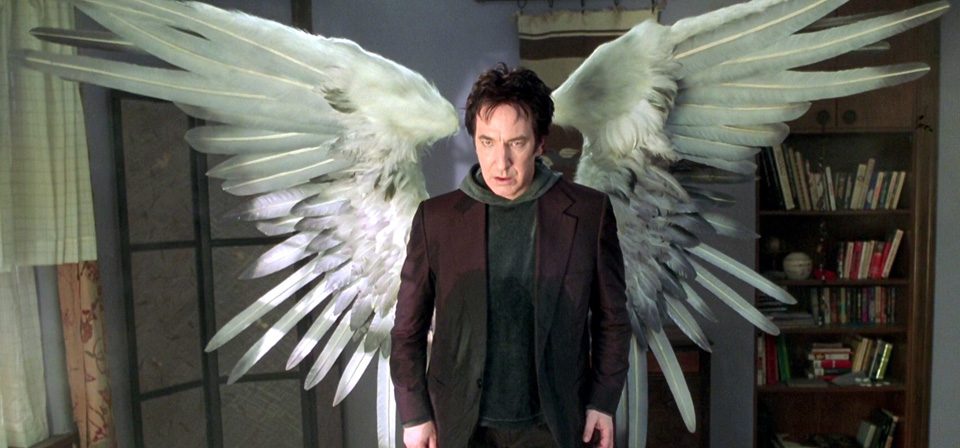
Dogma in Dogma: A Theological Guide
From a religious point of view, Kevin Smith’s Dogma comes a lot closer to making sense if you just accept one premise: The angels in it — fallen and otherwise — are all really bad at theology.
Cats and Dogs (2001)
Not that I’ve anything against cats. But there’s a particular breed of cat fancier who looks down at dogs precisely for qualities like their obedience, loyalty, and desire to please, explicitly preferring the fierce independence and proud impassiveness associated with cats. I wonder whether this kind of cat appreciation isn’t often rooted in a misguided human ideal — whether such people don’t prefer cats because they themselves like the idea of being remote and independent.
A Mighty Wind (2003)
Like Spinal Tap, A Mighty Wind follows a number of musicians who never actually existed, but often feel as if they might have. There’s a convincing history to the Folksmen, Mitch & Mickey, and the New Main Street Singers, developed by Guest through a combination of pseudo-archival footage, interview sequences, and period album covers that folk fans might almost remember having seen in their collections.
What a Girl Wants (2003)
Despite these similarities, What a Girl Wants differs from The Princess Diaries in three important respects, all of which are, as far as they go, good ideas.
The Princess Diaries (2001)
Everyone knows going in that Hathaway’s frizzy hair, horn-rimmed glasses, pratfalls, slouch, and puckered expressions aren’t going to hold her back for long. (Indeed, it takes a formidable effort to suspend one’s disbelief and accept that they hold her back at all. Hathaway manages to be suitably awkward in the medium shots, but every closeup blows the girl’s cover by revealing her cover-girl beauty. Casting the gorgeous 20-year-old "Get Real" actress as an 15-year-old ugly duckling is about as plausible as Jennifer Lopez playing a wedding planner who can’t get a date or Drew Barrymore playing a late bloomer who’s Never Been Kissed.)
Agent Cody Banks (2003)
Welcome to our second annual Spring Frankie Muniz Morally Problematic Spy Kids Rip-Off Movie, featuring hilarious hijinks offending each year against a different one of the Ten Commandments.
Maid in Manhattan (2002)
He’s a wealthy, unattached scion of a political dynasty; she’s a hard-working maid whose mother and workplace "sisters" discourage her from yearning for more. An updated "Cinderella" story in the Pretty Woman mold, Wayne Wang’s Maid in Manhattan (Columbia) makes agreeably diverting viewing for most of its 105-minute running time, though after the magic runs out at midnight the movie meanders through an autopilot resolution that lacks a glass slipper.
Moonlight Mile (2002)
This might seem an odd way to put it, but writer-director Brad Silberling’s Moonlight Mile could be thought of as a kind of backwards mirror-image of writer-star Nia Vardalos’s indie hit, My Big Fat Greek Wedding.
How To Lose a Guy In 10 Days (2003)
Now, the top of the Empire State Building is a lofty destination, an end in itself. By contrast, a bridge is only for going from one place and another. Like all of New York’s major river crossings, the Manhattan Bridge is undeniably a marvel of modern engineering; but for romance and evocative appeal, the Empire State Building surely has the edge by a considerable margin.
Chicago (2002)
(Co-written with Emily Snyder) Like Moulin Rouge!, Chicago involves sordid goings-on in a rather seamy milieu; but where the earlier film tried to contrast its dissolute ambiance with heart-warming sincerity and idealism, Chicago is cynical to the core.
Ice Age (2002)
The lion’s share of the credit for Ice Age goes to the sloth.
Kangaroo Jack (2003)
Now at last, from the creators of Coyote Ugly, comes the culmination of this trend: the action-comedy with black star, white star, love interest, talking kangaroo, flatulent camels, and poop jokes. Yes, it’s Kangaroo Jack — the world’s first family romantic action-comedy cross-racial buddy gross-out flick.
K-PAX (2001)
Prot pulls off these party tricks quite convincingly. Yet get him started on his theories about mankind, family, society, and the like, and the spell is broken: He’s clearly delusional. Not that I’m saying anything about the truth or falsehood of his claims. Prot may very well be an alien. That doesn’t mean he isn’t delusional.
Nurse Betty (2000)
In the end, how you feel about Nurse Betty will in good part depend, I suppose, upon whom you agree with, Charlie or Wesley. If you find Betty as enchanting and remarkable as Charlie does, then you may be relieved and happy when her troubles are over and she is at last able to realize her dreams. On the other hand, if like Wesley you regard her as ridiculous and pathetic, then you will find this movie a contemptuously hateful tale of cruelty and delusion, devoid of any spark of sympathy or compassion.
Adaptation (2002)
Formally, Adaptation resembles the sort of essay a clever student will sometimes pull together by taking the assigned topic as a point of departure for a composition of his own choosing, knowing that it will stand out for originality amid monotonous submissions and win points for daring and wit from a bored teacher appreciative of any show of interest.
I Spy (2002)
Wilson, a capable comic force in his own right, gets laughs too, but for the most part he’s content to play the laid-back straight man setting up Murphy’s punchlines. There’s an early scene in which, discussing their working relationship, Wilson uses a Harlem Globetrotters analogy to argue that he, the professional spy, should be team leader Meadowlark Lemon, and Murphy, a boxing champ, should be Fred "Curly" Neal, Meadowlark’s sidekick. Murphy, of course, ridicules this suggestion; and, whatever the ultimate relationship of their characters, which of the actors is Meadowlark and which is Curly is never in dispute.
Simone: Reality and Fantasy in Hollywood (2002)
The first line of the film’s closing credits read, "Introducing S1m0ne as Herself." At the time of the early-look screening I attended, no further information about "Simone" was readily available. The movie’s production notes, website, and Internet Movie Database entry were all silent about who, or what, Simone might be.
Amélie (2001)
Like the similarly acclaimed Moulin Rouge!, Jean-Pierre Jeunet’s Amélie is a whimsical, hyperactive, self-aware, lavishly overdesigned fantasy-romance, set in a retro, fairy-tale Paris, about a tender young idealist who falls in love with a sex-industry employee — but there the similarities end.
Men in Black II (2002)
Beyond more action and bigger effects, the sequel brings nothing new to the table. You’ll wait in vain for satirical "revelations" about the presence of aliens among us to match the wit of the jokes in the original about cab drivers or the World’s Fair. Instead, we get limp gags like the one about the Post Office being staffed by aliens. (Why? Is it a joke about postal efficiency? The "going postal" stereotype? The fact that they make rounds? What?)
Stuart Little 2 (2002)
Remarkably, Stuart Little 2 manages to be both more satisfying for adults and more kid-friendly than the original. Older viewers will appreciate the sequel’s stronger story and witty script; and even little kids who might have found the original film’s menacing Central Park gangster cats too intense may be able to watch this film’s villainous falcon without fear of bad dreams.
American Beauty (1999)
Some movies have a moral. I say that as a mere statement of fact, with no implication that either having or not having a moral necessarily makes a movie better or worse. Some movies have a moral; American Beauty - and this is also a mere observation, not a value judgment - has an aesthetic.

Lilo & Stitch (2002)
Lilo & Stitch is a unique imaginative achievement that succeeds in its own right, without laying down any kind of template for future films to follow. Attempts to repeat its success, to make it into a formula, would be a dismal failure, unless perhaps the formula were to be "Give the creative people room to try something new and let them work without a safety net." What a concept.
Bad Company (2002)
The first hour works quite a bit better than the second hour, in part because there is a second hour. The setup: When CIA agent Kevin Pope (Rock) is murdered in the middle of an important undercover operation involving the black-market sale of a miniature thermonuclear device, Pope’s CIA mentor Gaylord Oakes (Hopkins) must convince the sellers that Pope (or rather his undercover persona) is still alive. To do this, Oakes must turn to — you guessed it — Pope’s long-lost twin brother.
Divine Secrets of the Ya-Ya Sisterhood (2002)
Despite being more of the "Yo" than "Ya" persuasion, I think I’m pretty receptive toward what are commonly called "chick flicks." After all, my wife and I enjoy the same "guy movies"; why shouldn’t we enjoy the same romances and other female-targeted films?
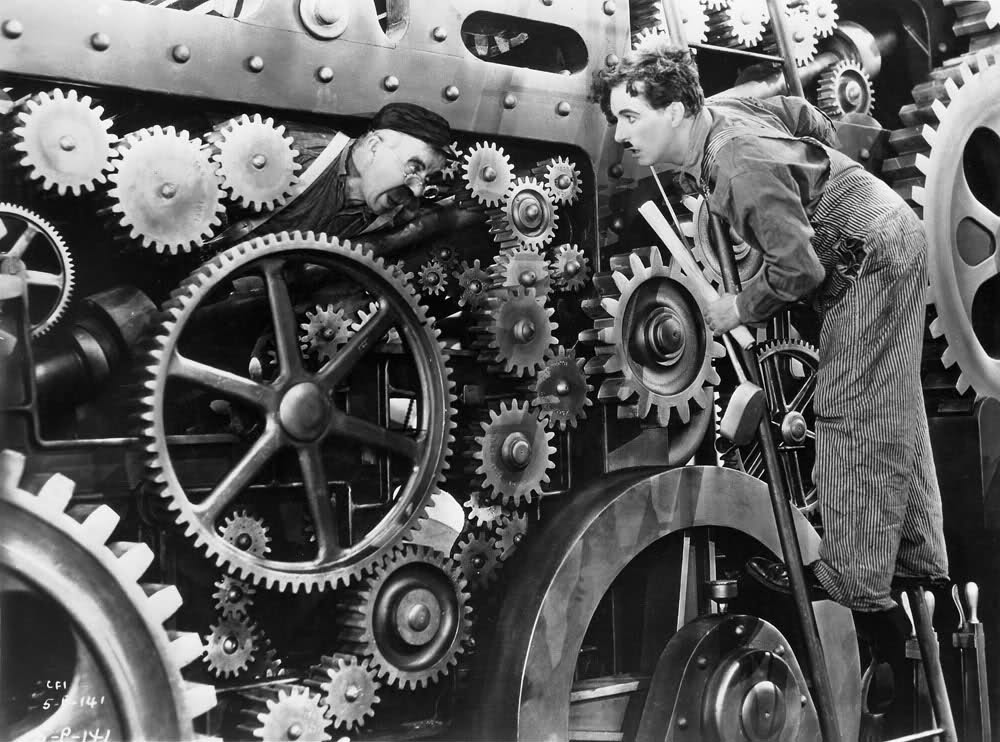
Modern Times (1936)
Silent films were already old-fashioned and out of vogue in 1936 when Charlie Chaplin completed his last silent feature film, Modern Times, almost ten years after the sound revolution began with The Jazz Singer. A silent film consciously made for the sound era, Modern Times is a comic masterpiece that remains approachable today even for movie lovers raised on computer imaging and surround sound.
Life or Something Like It (2002)
Meet Pete (Ed Burns). He’s a cameraman who dresses and behaves in slacker fashion, drinks beer on the job, sleeps around, and says rude things to Lanie. This means he’s an alright guy who Does Know How to Have Fun.
Mumford (1999)
It’s not hard to play connect-the-dots and pair off likable characters with one another. It’s harder to put them in a story that’s worthwhile. This is a film without conviction, about a town full of people with problems without depth, aided by a guru without soul. Mumford is a fraud. Take that in whatever sense you like.
Galaxy Quest (1999)
Besides satirizing Star Trek’s fan base, Galaxy Quest also takes aim both at the absurdities of the show itself and also at the behind-the-scenes reality. Most of the obvious Trek conventions are targeted: the principle that any extraneous character on an away mission always dies; the shipwide crisis that requires crew members to crawl through endless ducts; the isolation of the captain on a hostile planet where he must do hand-to-hand combat with an alien monster.
Monsoon Wedding (2001)
This is one feel-good film that earns its goodwill honestly — not glossing over the harder realities and transgressions that afflict family life, but instead making the case that, however exasperating and even dysfunctional one’s family may happen to be, family remains very close to the center of things. Not just "family" in the abstract, either, or as an ideal, but the reality of family as we actually experience it.
Pleasantville (1998)
The film’s central conceit is that the process of colorization is spread through acts of exploration or self-discovery by which people step outside their customary ways into a new world. In the black-and-white world of the 1950s TV sitcom, one common means of transformation is sexual activity, which didn’t exist in "Pleasantville" until the teenagers (Jennifer in particular) introduced it. When Jennifer gently explains the facts of life to her sitcom mother (Joan Allen), the latter is certain that her prosaic husband (William H. Macy) could never be induced to engage in such activity; so Jennifer proceeds to coach her mother (offscreen) on how to commit self-abuse. The mother then proceeds to do so, with such explosive results that by a kind of sympathetic magic the tree in the front yard bursts into flame.
What Women Want (2000)
Women are from Venus; men are from the gutter.
Tortilla Soup (2001)
Tortilla Soup isn’t the delicacy that Eat Drink Man Woman was, nor does it compare with the exquisite meals prepared by the patriarchs of either film. But on the level of comfort food this remake is enjoyable enough, unless of course you’re a purist conoisseur like Martin. Watching it, I laughed out loud any number of times, and so did others in the theater.
Singin’ in the Rain (1952)
Celebrating its 60th anniversary in style, Singin’ in the Rain comes to Blu-ray with an astoundingly good-looking new transfer of the best available film elements.
Return to Me (2000)
The pious, folksy Irish and Italian Catholicism of Carroll O’Connor and his cronies isn’t there for the sake of either mockery or preachiness, but is simply taken for granted, just as it might have been in a film of this sort from fifty years ago, when they still made them. The story also takes for granted (indeed, depends upon) the fact that the hero and the heroine manage to fall in love and grow together without taking their clothes off.
Monsters, Inc. (2001)
The world of Monsters, Inc. is a more artificial and contrived affair than the Toy Story world, and something of the figure of the Monster in myth and fairy tale and imagination has been lost. Yet there’s also a slyly satiric point: Childhood fears aren’t what they used to be.
The Mexican (2001)
There’s some freshness here amid the formula, but mainstream audiences are liable to find The Mexican too long and slow, too violent, and too off-putting. A few film aficianados and critics, numbed by the present dismal spate of lousy Hollywood efforts, may hail it as a wonderful find. But only the absence of worthwhile competition — and a highly watchable performance by "The Sopranos"’s James Gandolfini (who gets far more screen time with Roberts than Pitt does) — qualifies this middling effort as a modest success by any standard.
Life is Beautiful (1997)
Contriving to hide the boy from camp officials (who soon put the other children to death), Guido tells Giosue that the concentration camp is actually an elaborate role-playing game in which the "players" are competing for points in the hopes of winning a real battle tank. From then on, Guido will take any risk, court any danger, to maintain his son’s illusion that none of it is real.
Kate and Leopold (2001)
Whenever Kate and Leopold is about Kate and Leopold (Meg Ryan and Hugh Jackman, respectively), it just about works.
Gosford Park (2001)
It’s this dynamic that Altman is really interested in, not “whodunit.” Or, if Altman does care whodunit, it’s only insofar as the answer illuminates the film’s real themes of snobbery and resentment, exploitation and interdependence, privilege and privation.
The Flintstones in Viva Rock Vegas
I think that a similar dynamic may be at work in The Flintstones in Viva Rock Vegas, a prequel to the 1994 film that purports to tell us how young Fred and Barney first met and married Wilma and Betty (respectively). Kids may happily gobble up Viva just because it’s a movie based on a popular cartoon show; and even parents desperate for watchable family entertainment may allow themselves to be seduced by its colorful set pieces and the goofy charm of the cast. But really, it’s not at all good. Not so much nasty, like coffee ice cream to a child; but rather bland, inert, and joyless, like some insipid sugar-free fat-free Frozen Dessert Product.
The Family Man (2000)
If it were only predictable, syrupy, and overlong, The Family Man might still be worth watching for the appealing performances from Leoni and Cage. Alas, its problems are more deep-rooted than that.

The Dish (2000)
The Dish is closer in spirit to gentle British and Irish comedies like Waking Ned Devine and The Matchmaker than more characteristically edgy Australian comedies such as Strictly Ballroom, Muriel’s Wedding, and Priscilla, Queen of the Desert. Sam Neill, leading the Australian cast, sets the tone; his deliberate, relaxed performance as Cliff is at the center of the film, as he plays Andy Griffith to the residents of this down-under Mayberry.
Come to the Stable (1949)
The bishop (Basil Ruysdael) is a decent enough chap, sympathetic to the sisters’ mission but daunted by the practical difficulties. As their cause goes forward, however, he begins to suspect that what’s driving them is an irresistible force before which there is no known immovable object: "There hasn’t been for 2000 years."
Chicken Run (2000)
Real chickens, I have it on expert testimony, are homebodies who do not actually pine for freedom, as do the heroines of Chicken Run. Whereas these poultry-farm prisoners plot and scheme endlessly to contrive by any means necessary to get under, over, or around their chicken-wire prison wall, my wife’s hens actually perch atop the five-foot fence that surrounds our back yard. They are quite capable of escaping, but have no interest in doing so.
Big Fat Liar (2001)
In the end, when the parents realize all their son went through to win their trust, they can’t help but be proud of him. Another touching Hallmark moment brought to you by a Hollywood committee, none of whom has any children or parents of their own, or knows anyone who does.
Being John Malkovich (1999)
The malleable, plastic vision of human nature in general and of sexuality in particular, in which gender and relationships shift and merge and re-form like blobs of goo in a lava lamp, represents a profoundly anti-human fantasy and an affront to personal dignity.
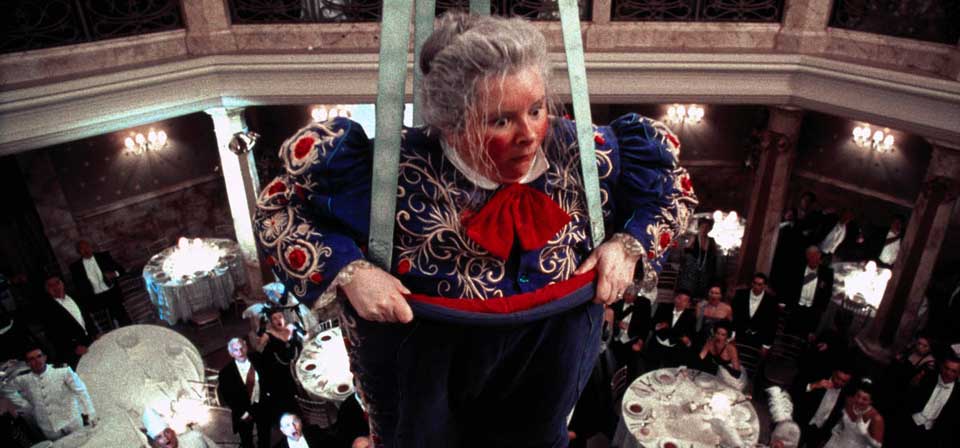
Babe: Pig in the City (1998)
As an enthusiastic fan of the first Babe, I wanted to believe in the sequel, even if it did turn out to be too dark for young kids. After all, Miller was also the screenwriter and producer for the original film, directed by Chris Noonan. So I came to Babe: Pig in the City with high hopes.
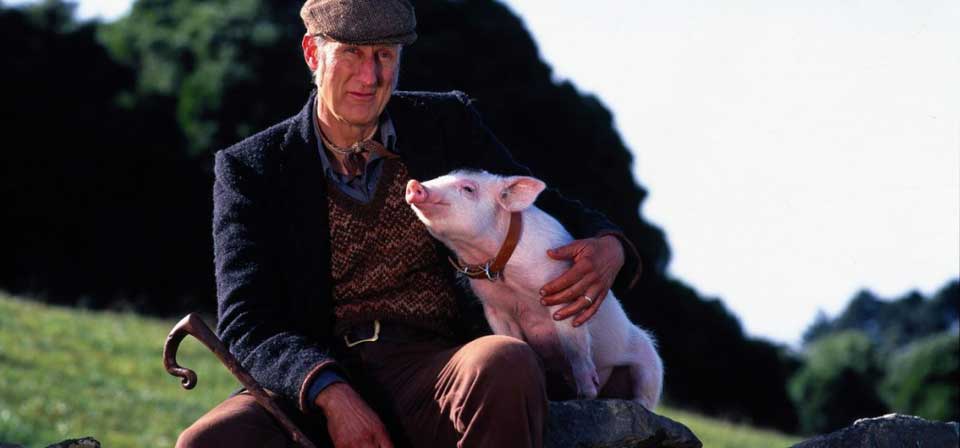
Babe (1995)
The judges rating the pig’s performance might as well be grading the entire movie. Babe is a perfect 10.
G-Force (2009)
Parents may be interested to know that the movie tie-in toys are equipped with sound and movement as well as gear. Will the toy Blaster say things like “Pimp my ride!” and “That was off the hizook!” like he does in the movie? Will the toy Juarez riff on the Pussycat Dolls line “Don cha wish your girlfriend was hot like me”? Will the toy Darwin say “Yippie kay yay, coffee-maker!”? There’s a click moment waiting to happen in another ten or fifteen years (hopefully not before that).
Recent
- Are there too many Jesus movies?
- Antidote to the digital revolution: Carlo Acutis: Roadmap to Reality
- “Not I, But God”: Interview with Carlo Acutis: Roadmap to Reality director Tim Moriarty
- Gunn’s Superman is silly and sincere, and that’s good. It could be smarter.
- Elio is a space adventure that Toy Story’s Andy would actually enjoy
Home Video
Copyright © 2000– Steven D. Greydanus. All rights reserved.